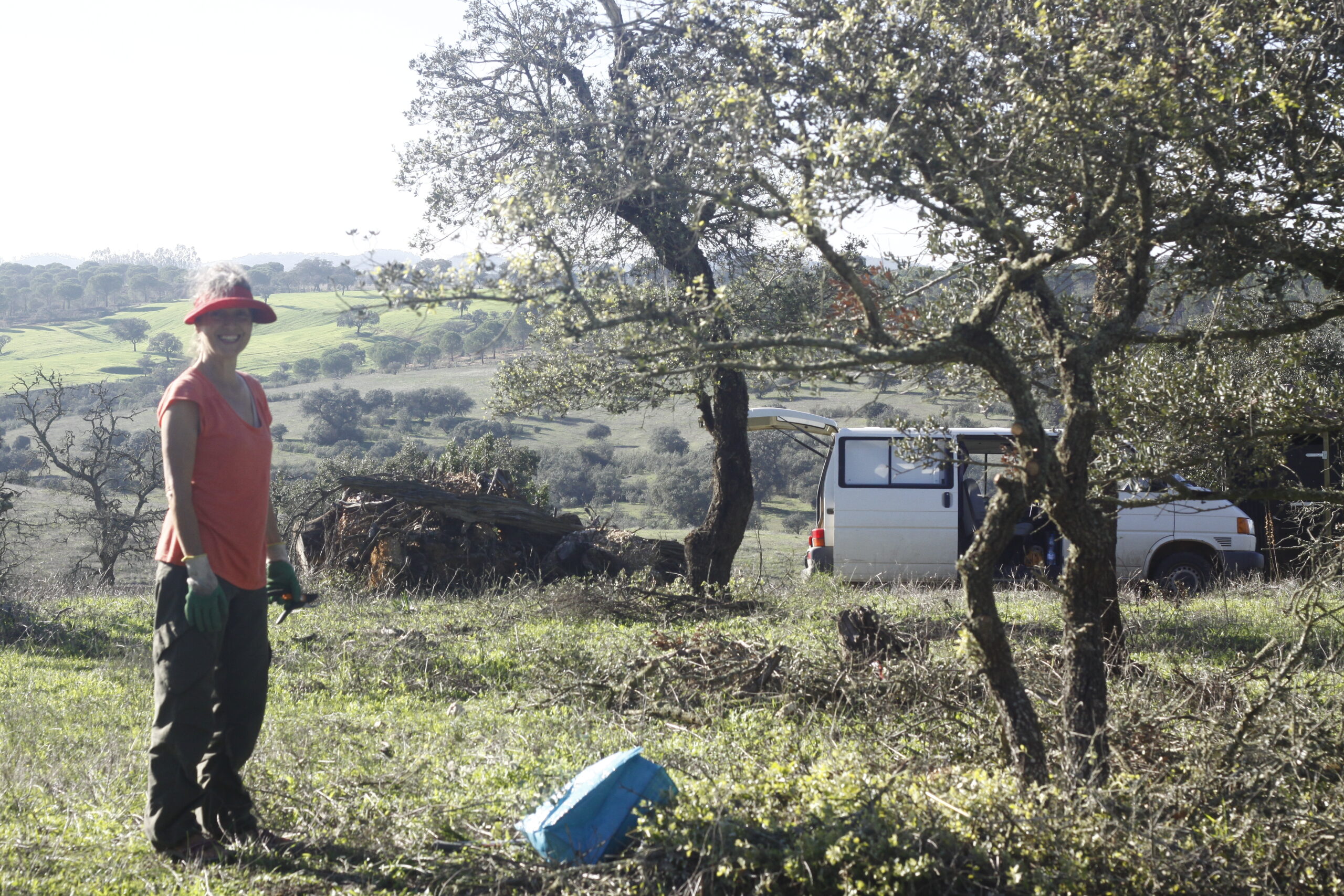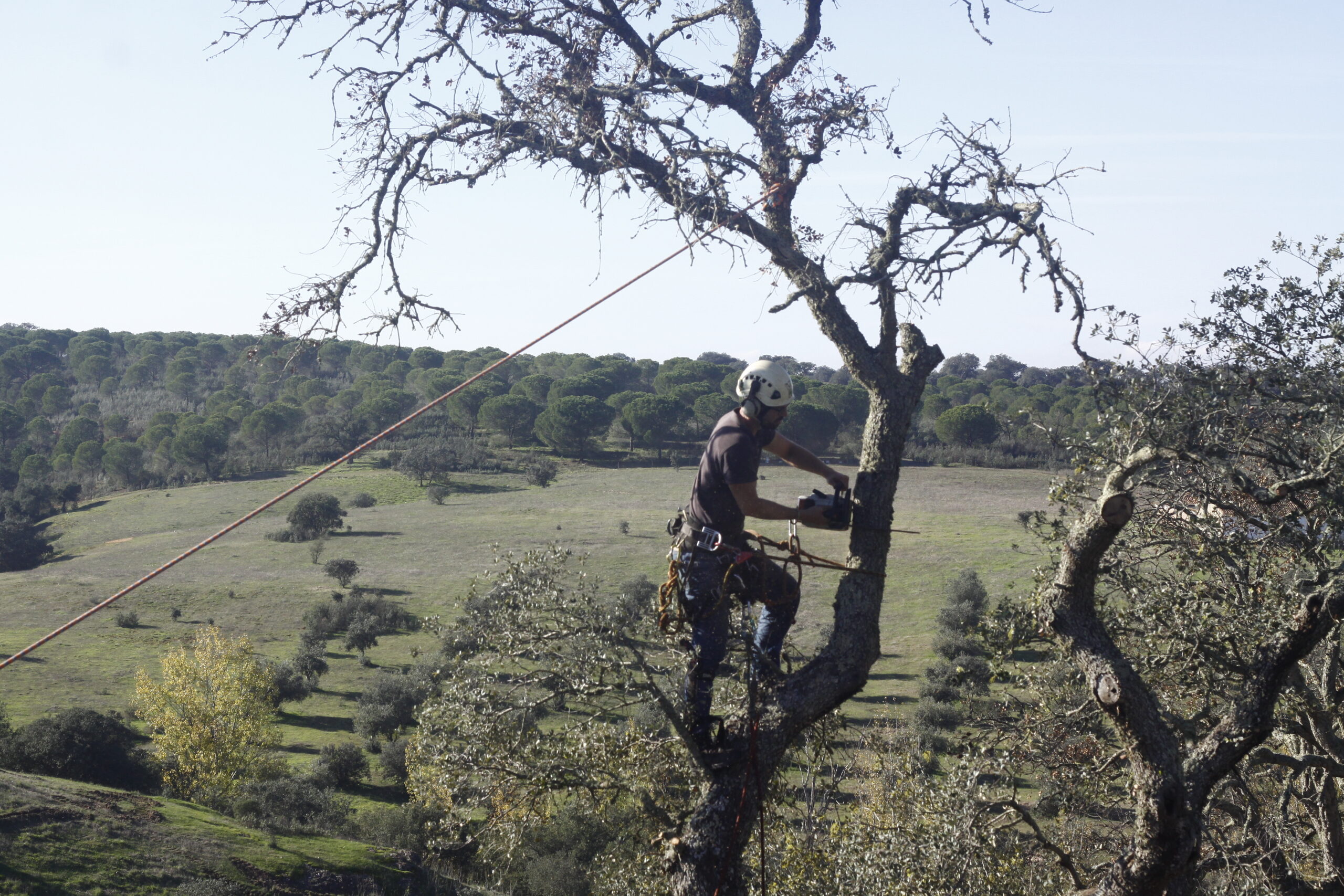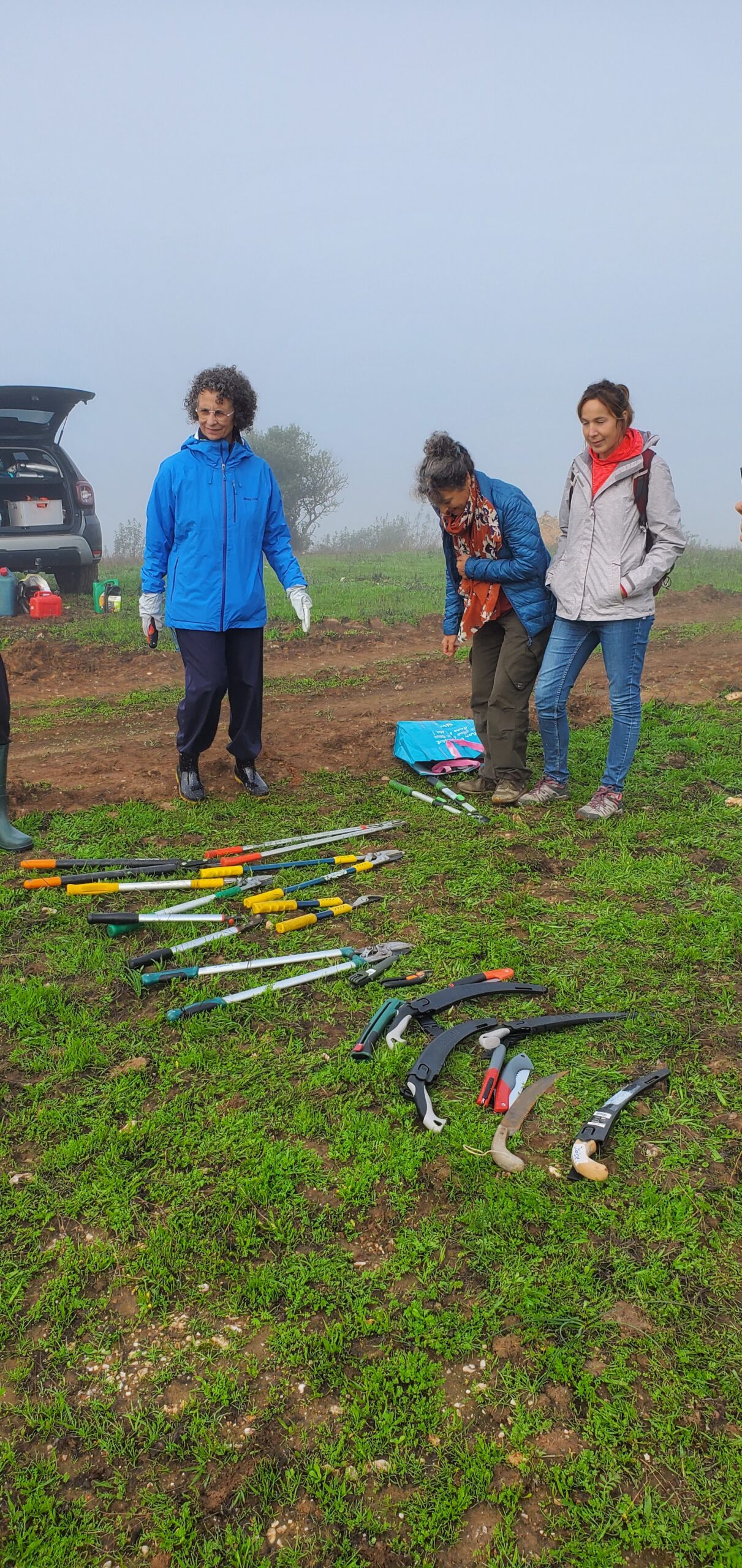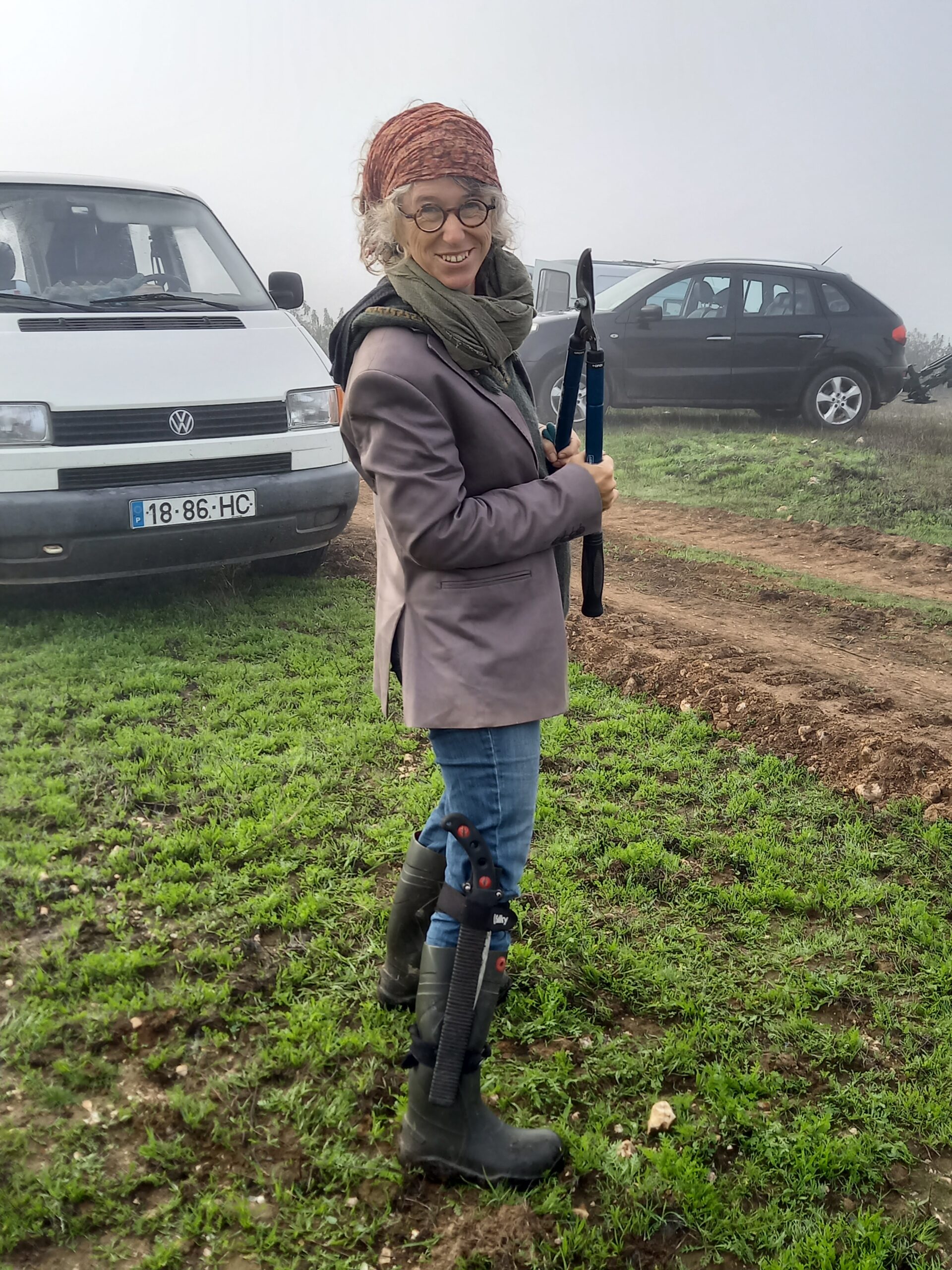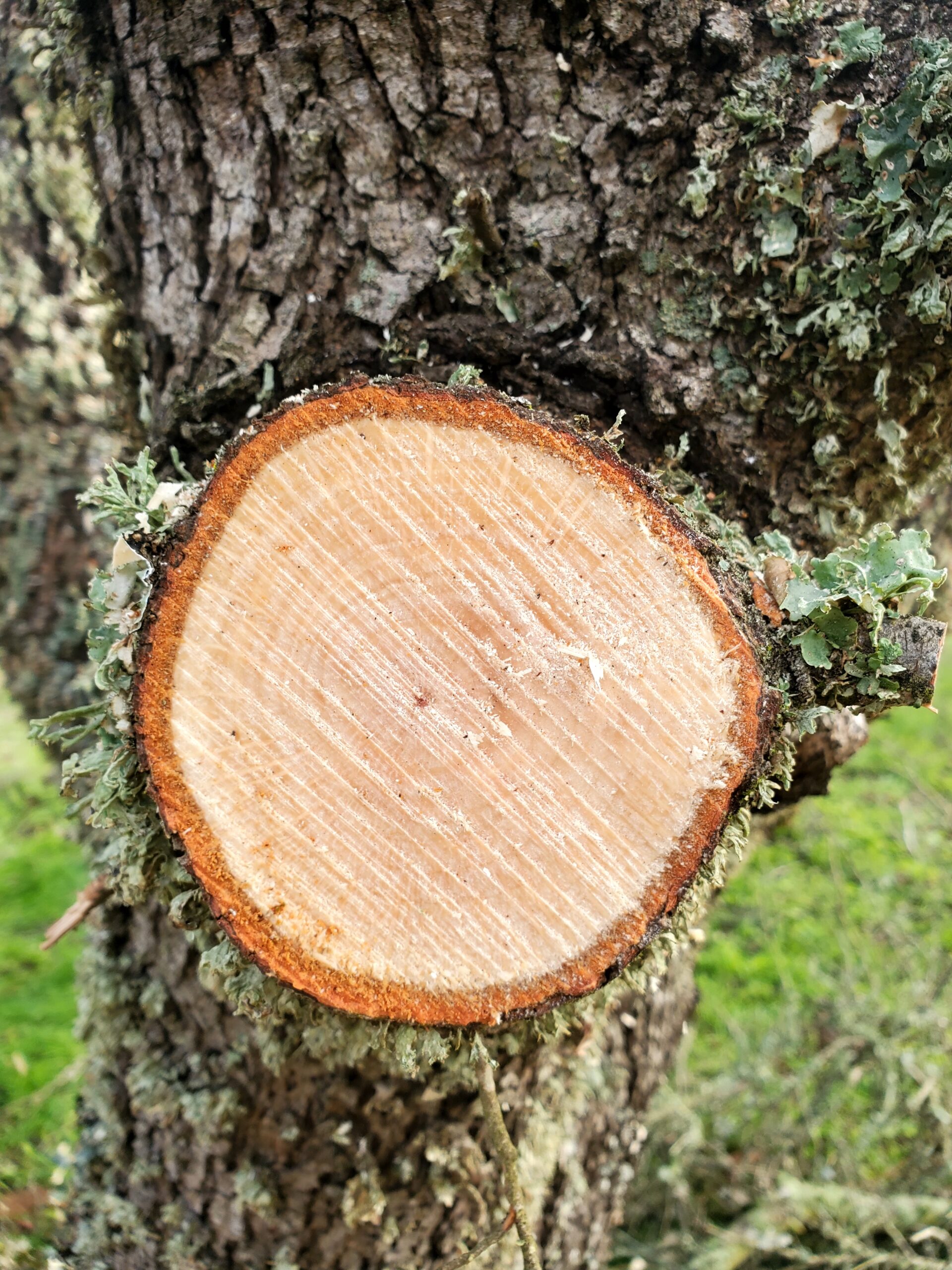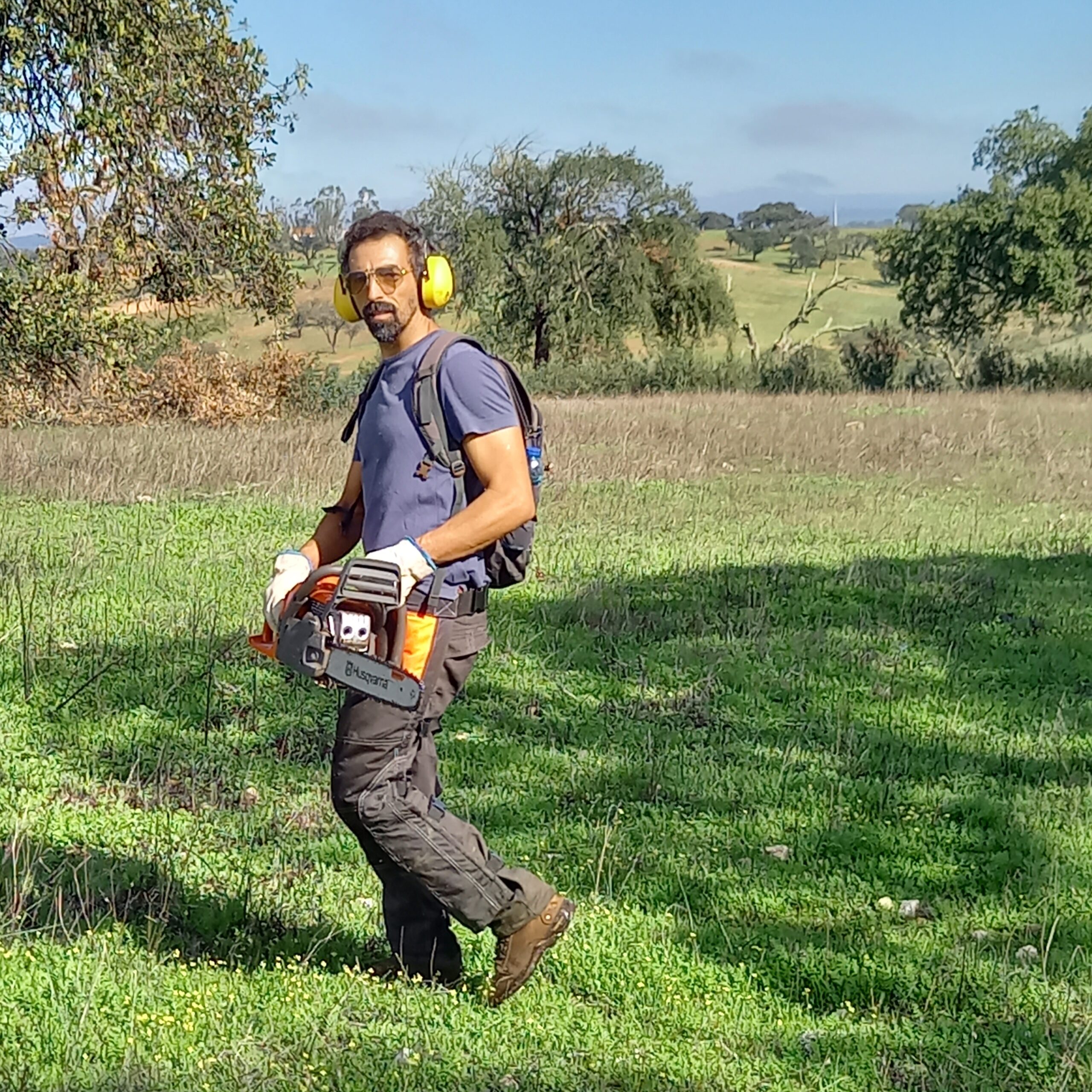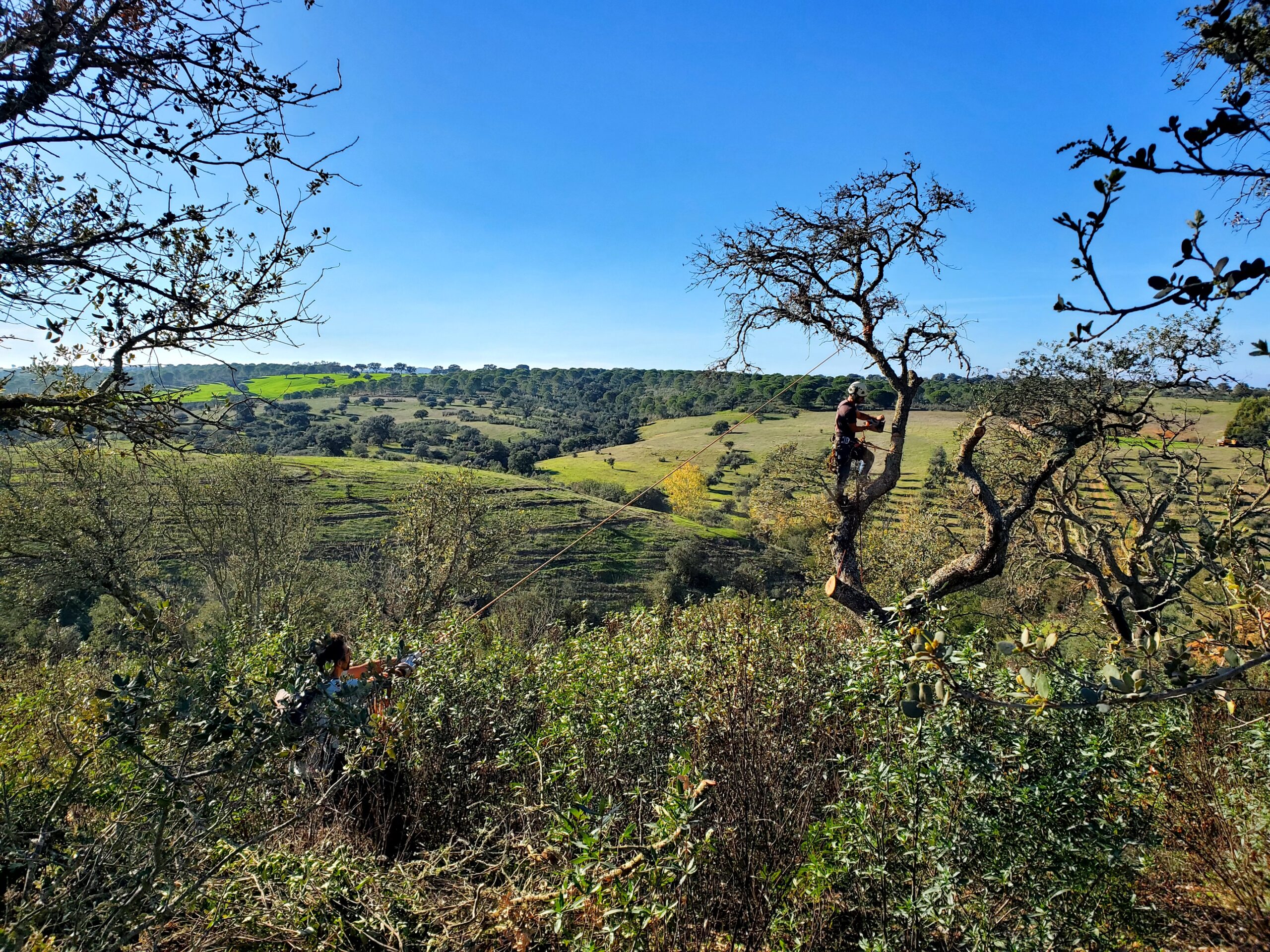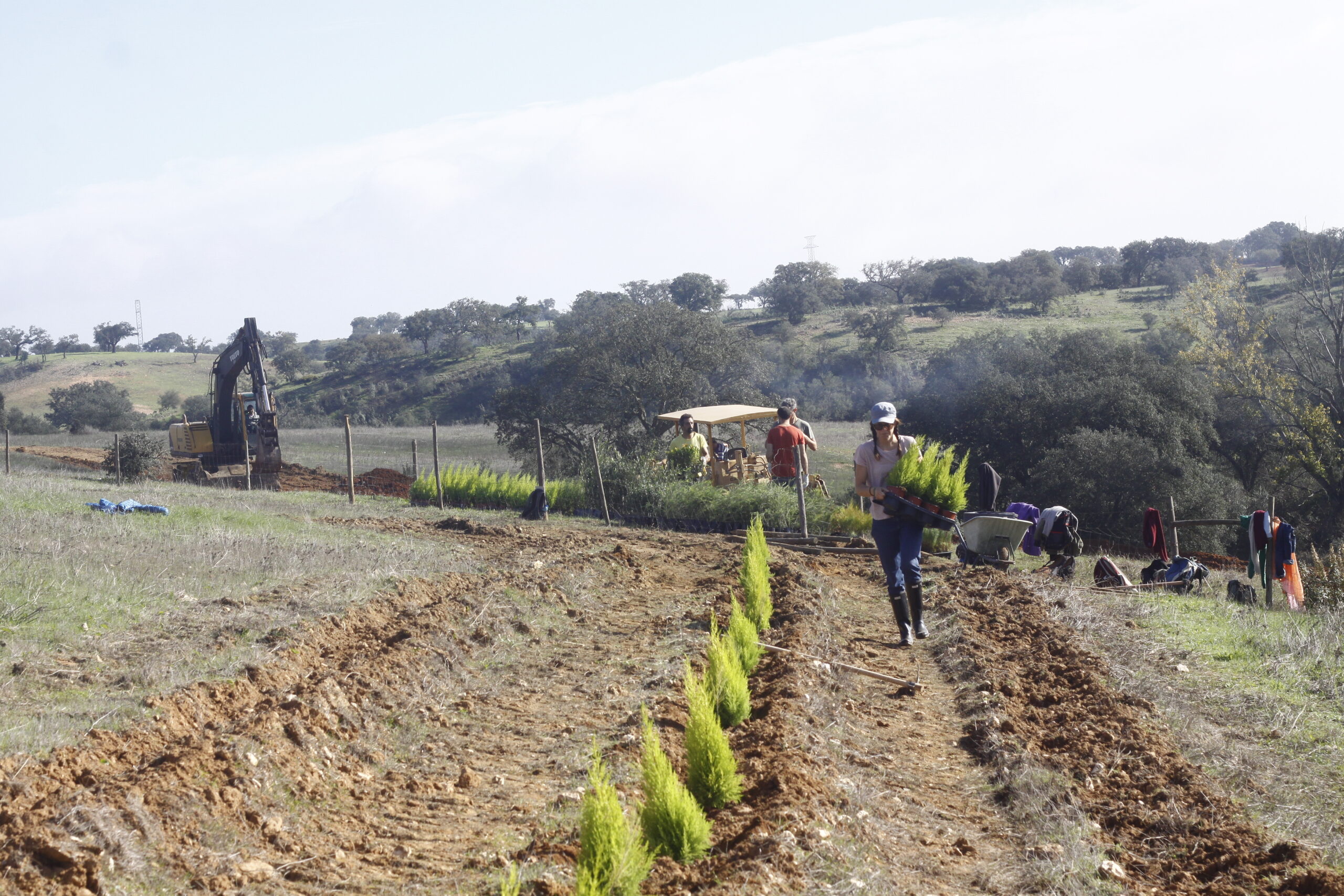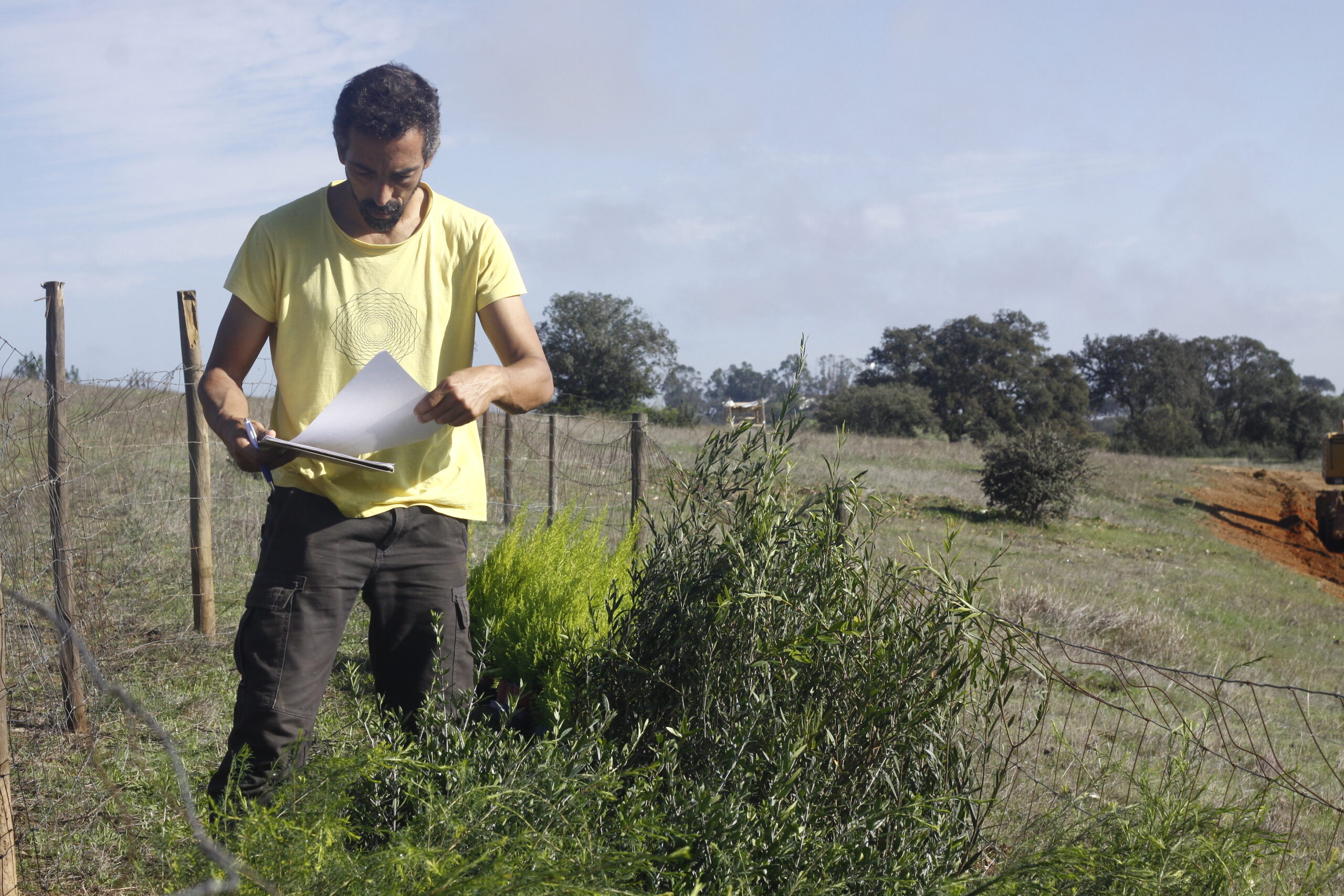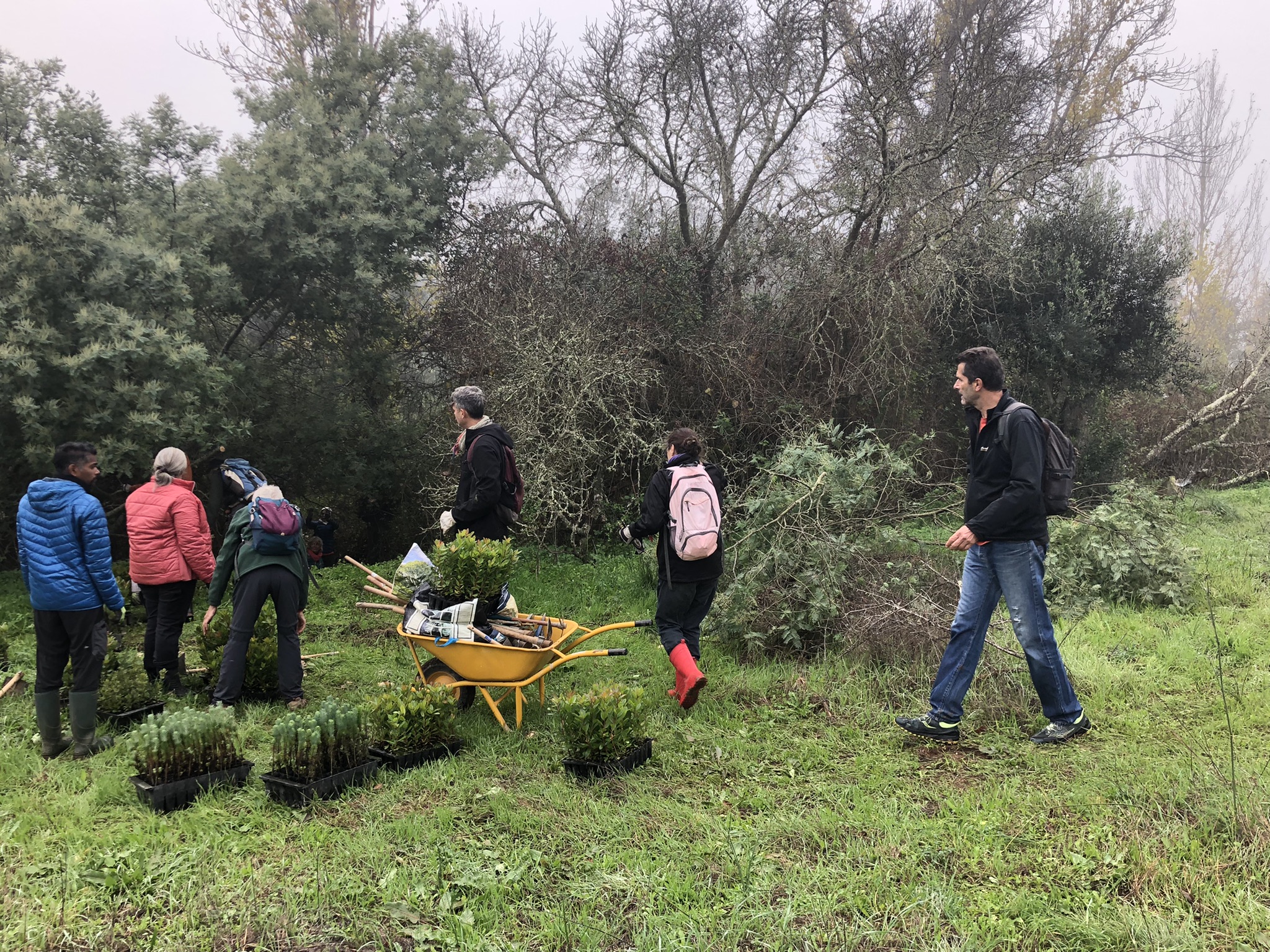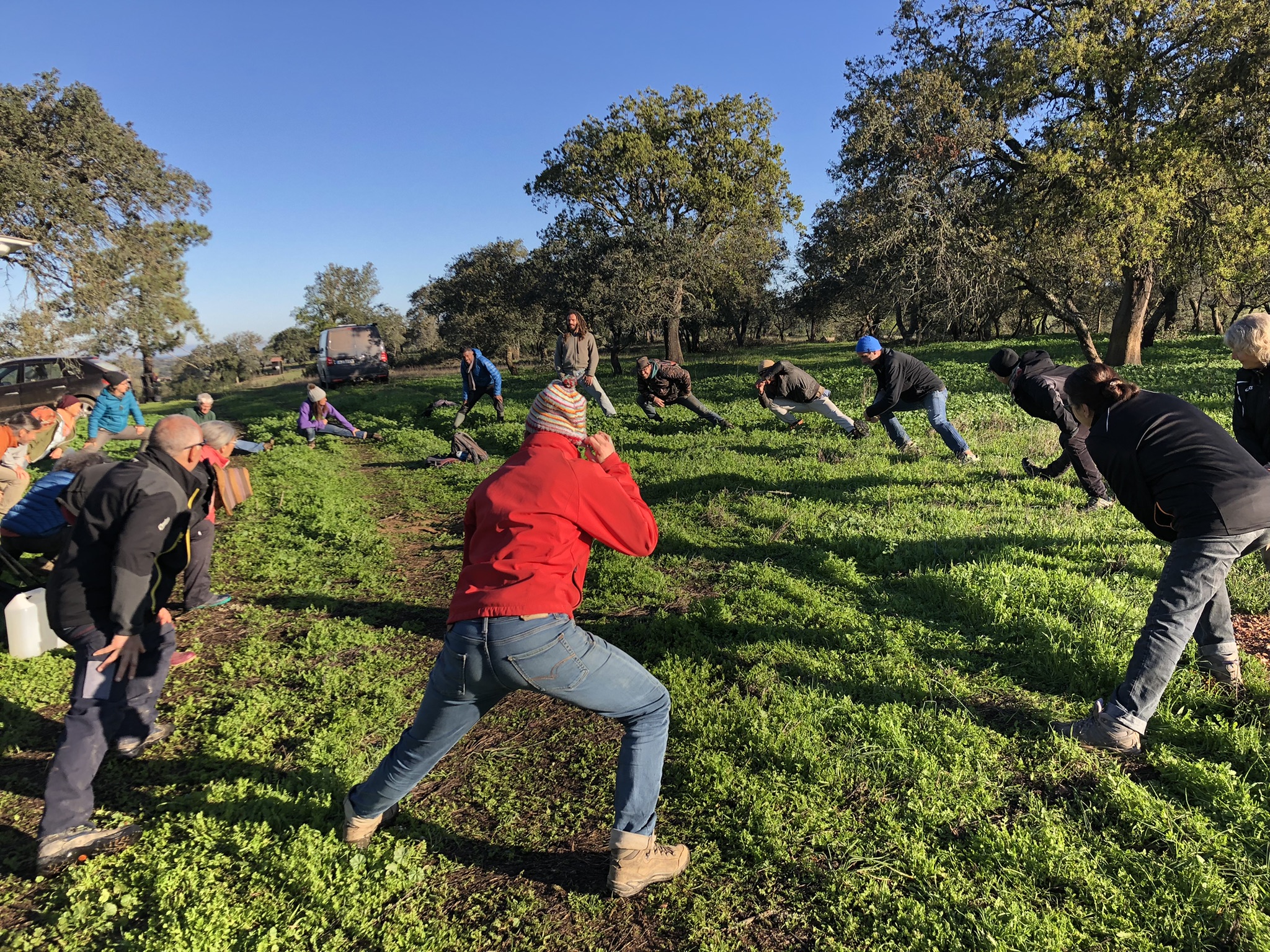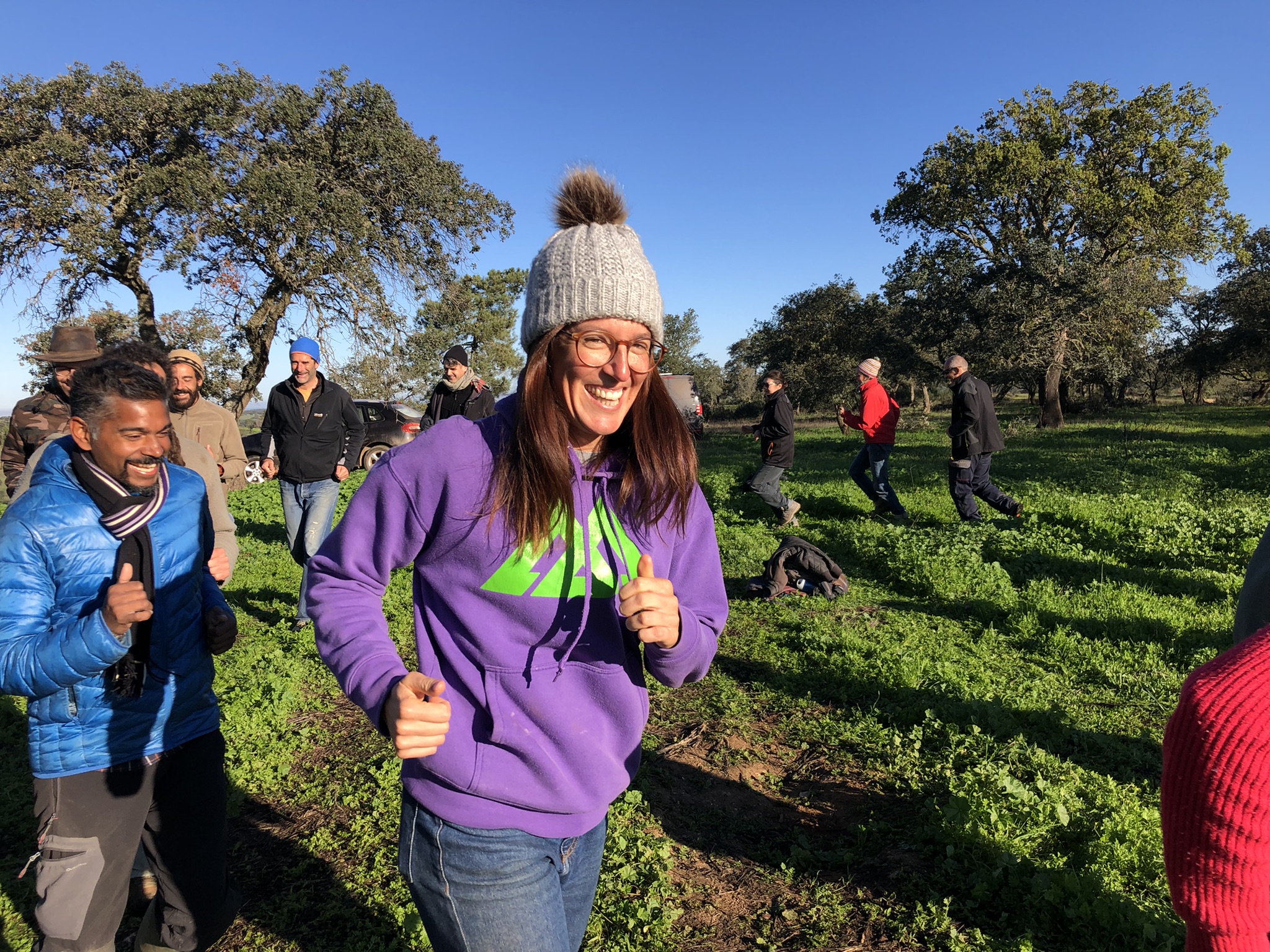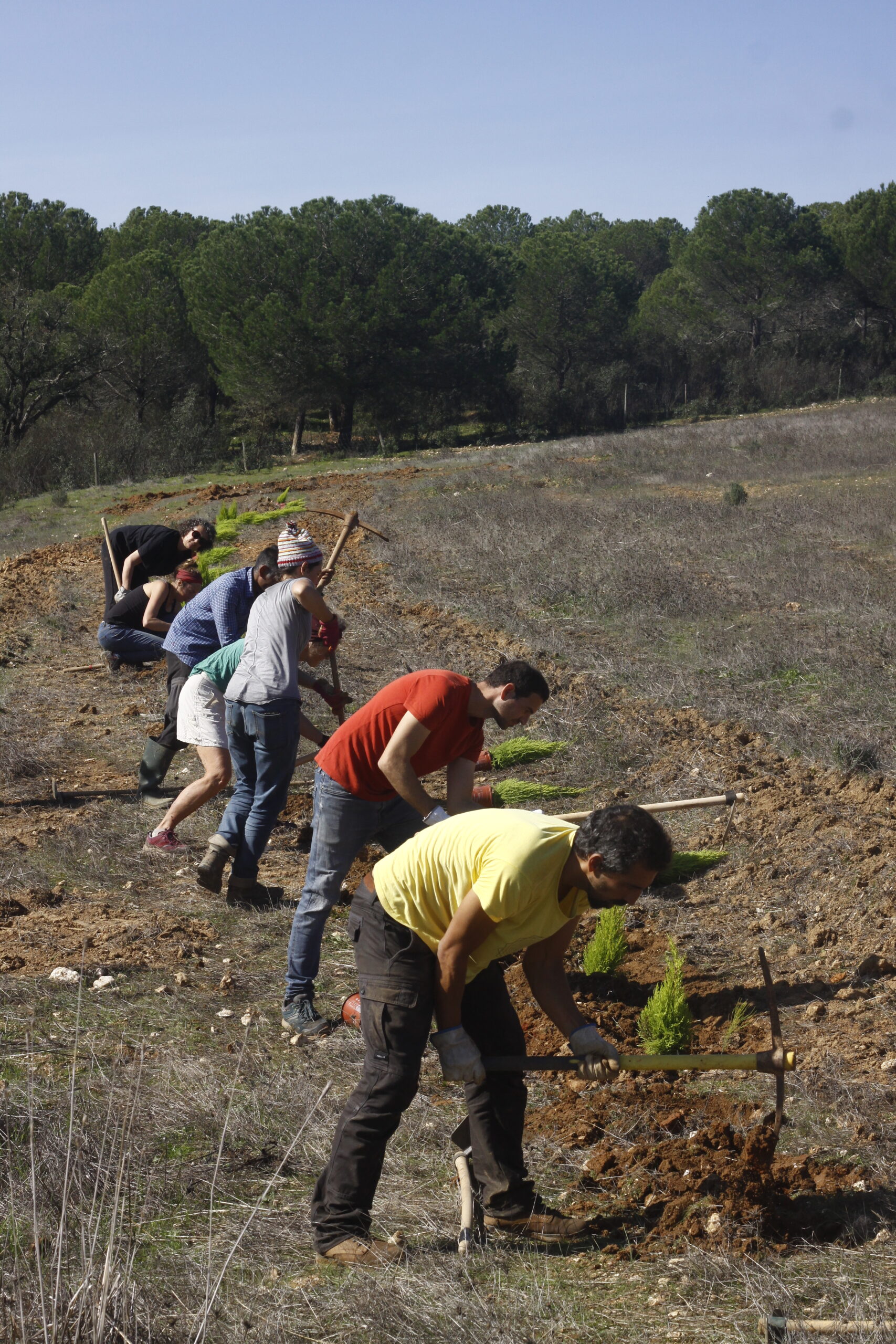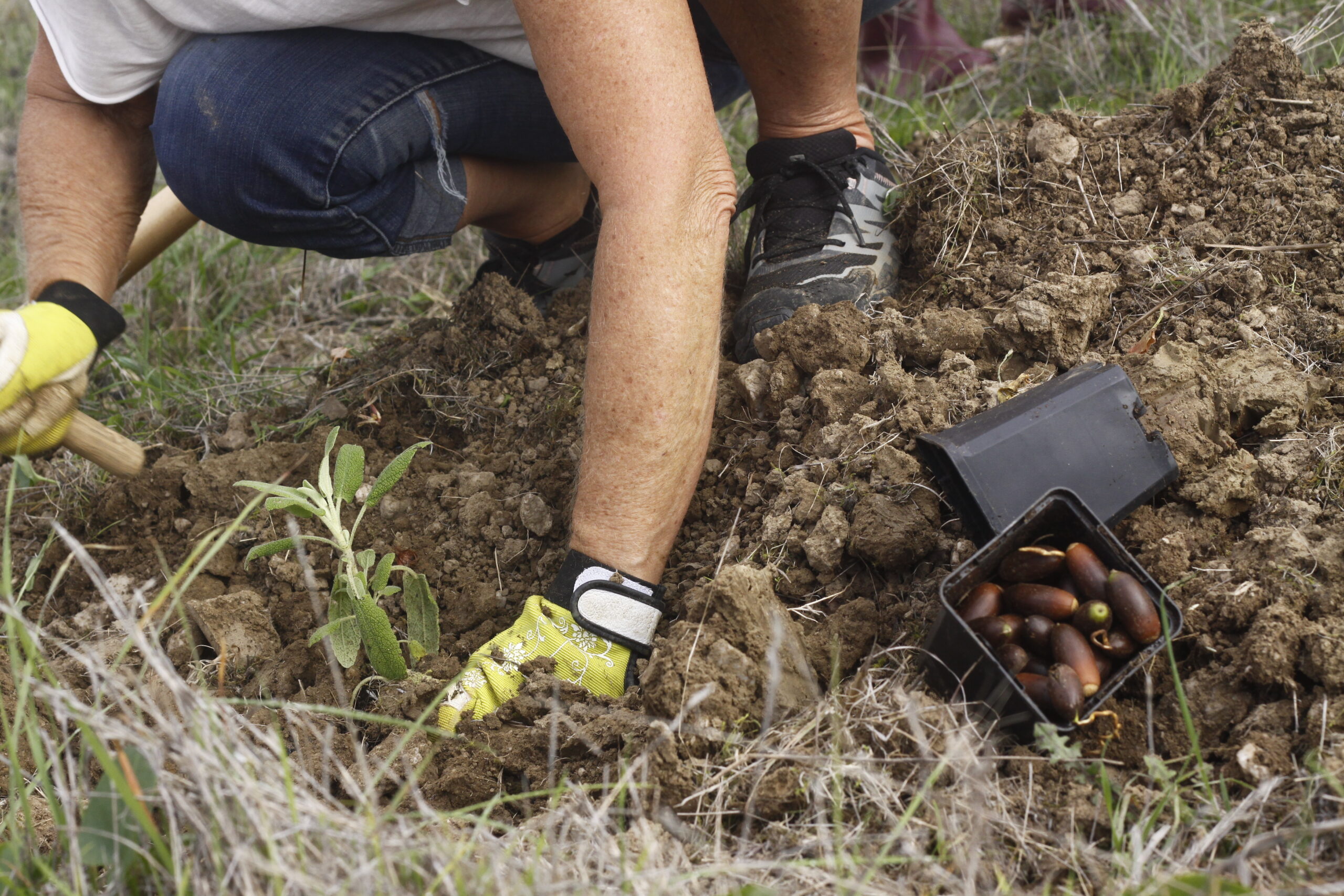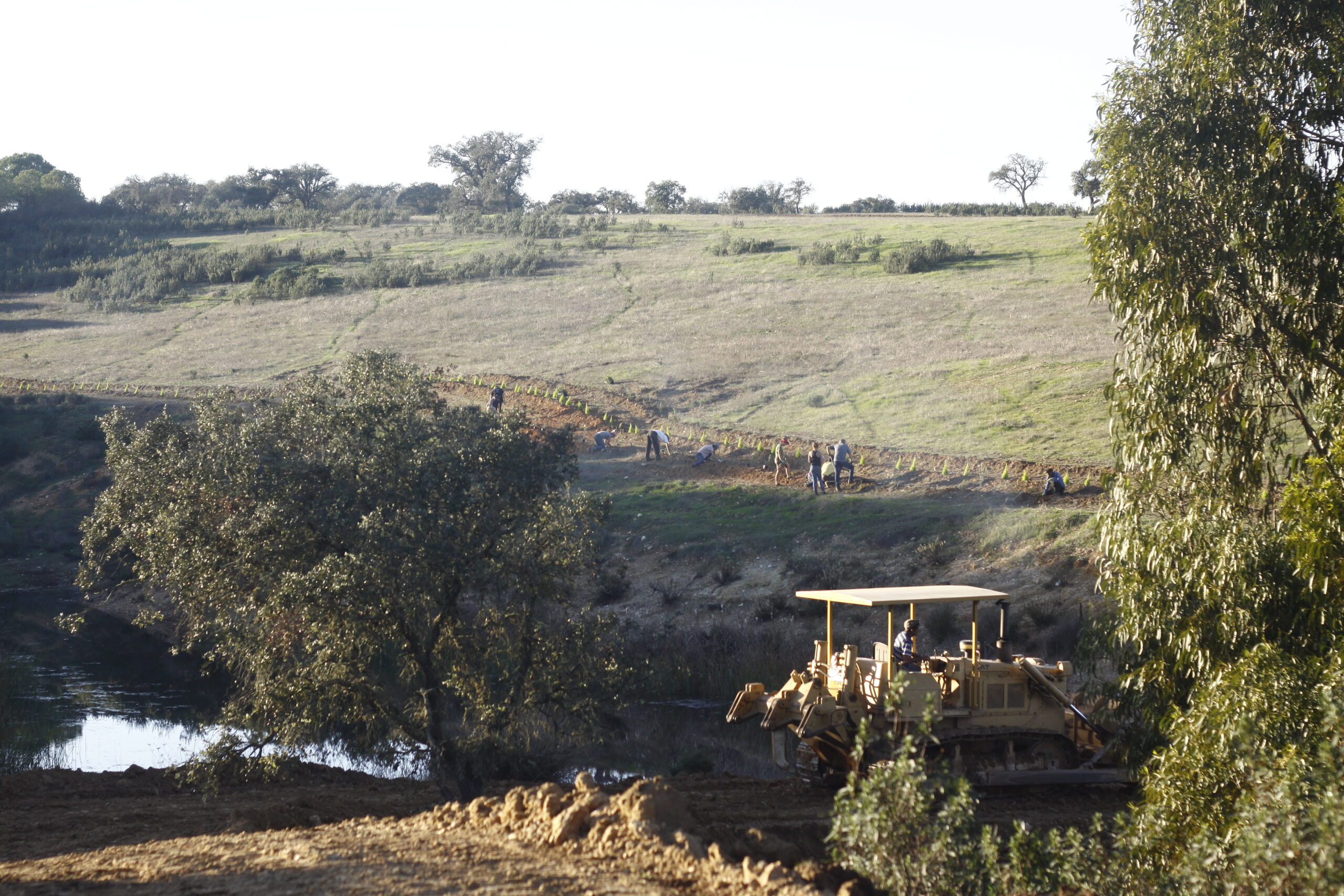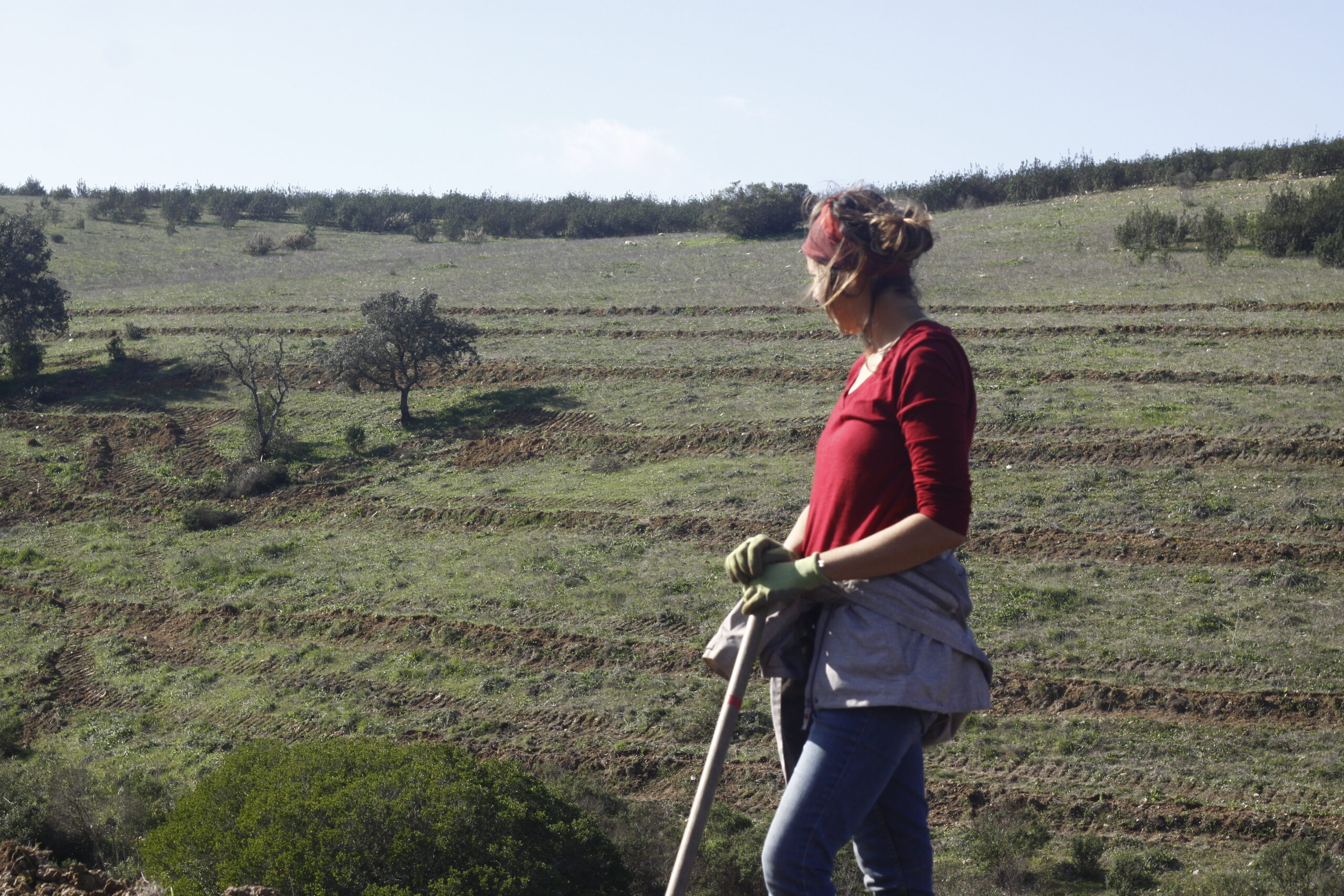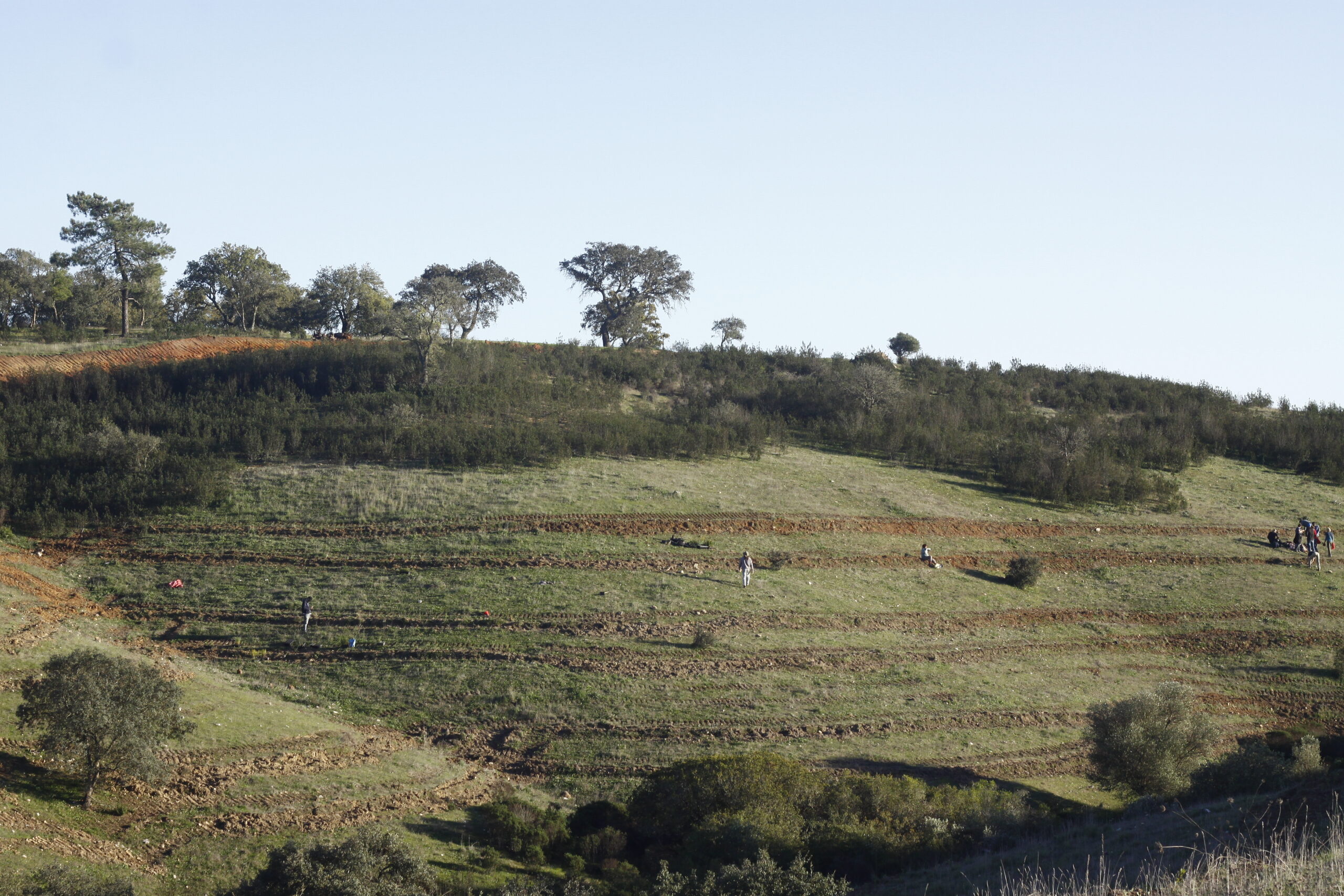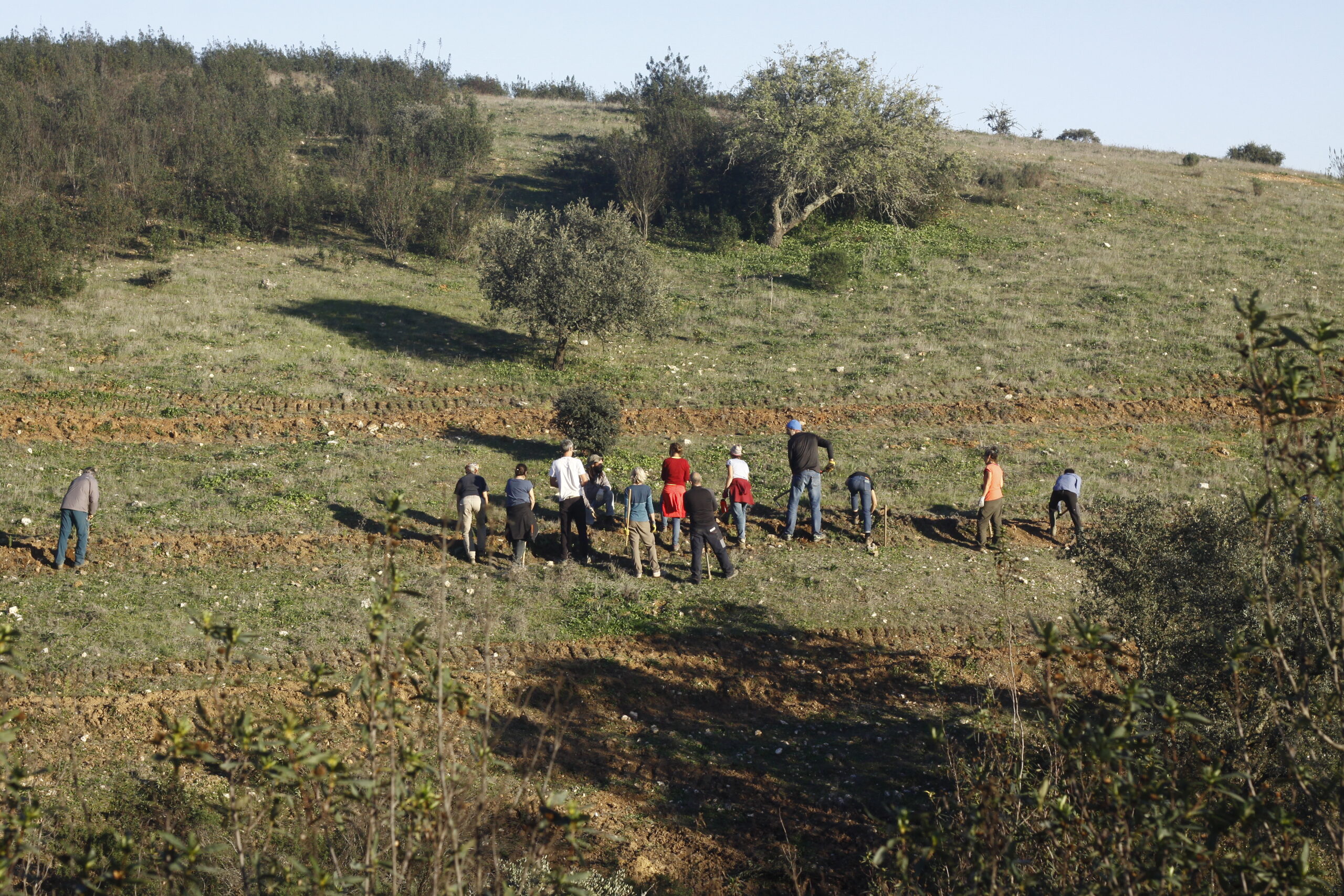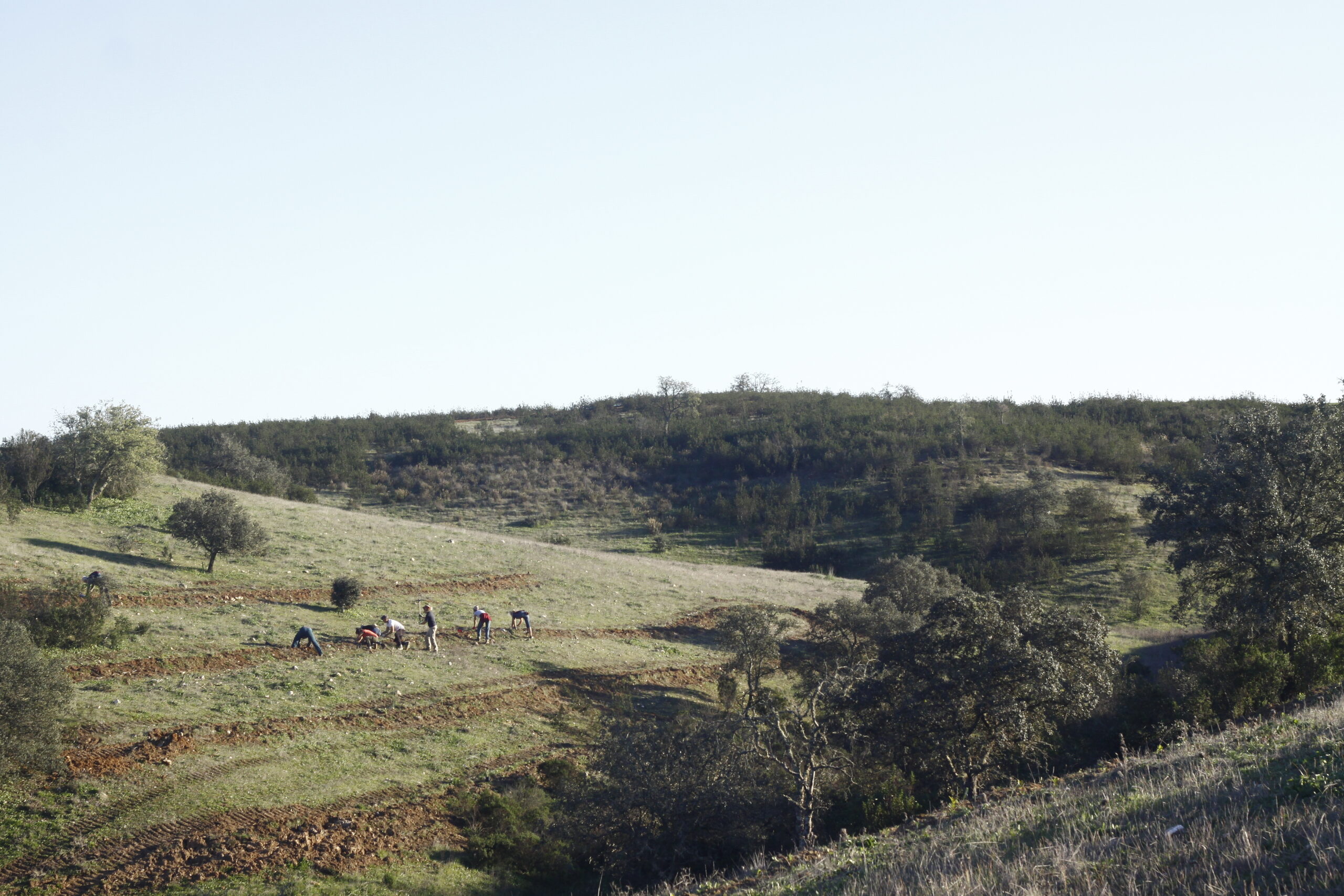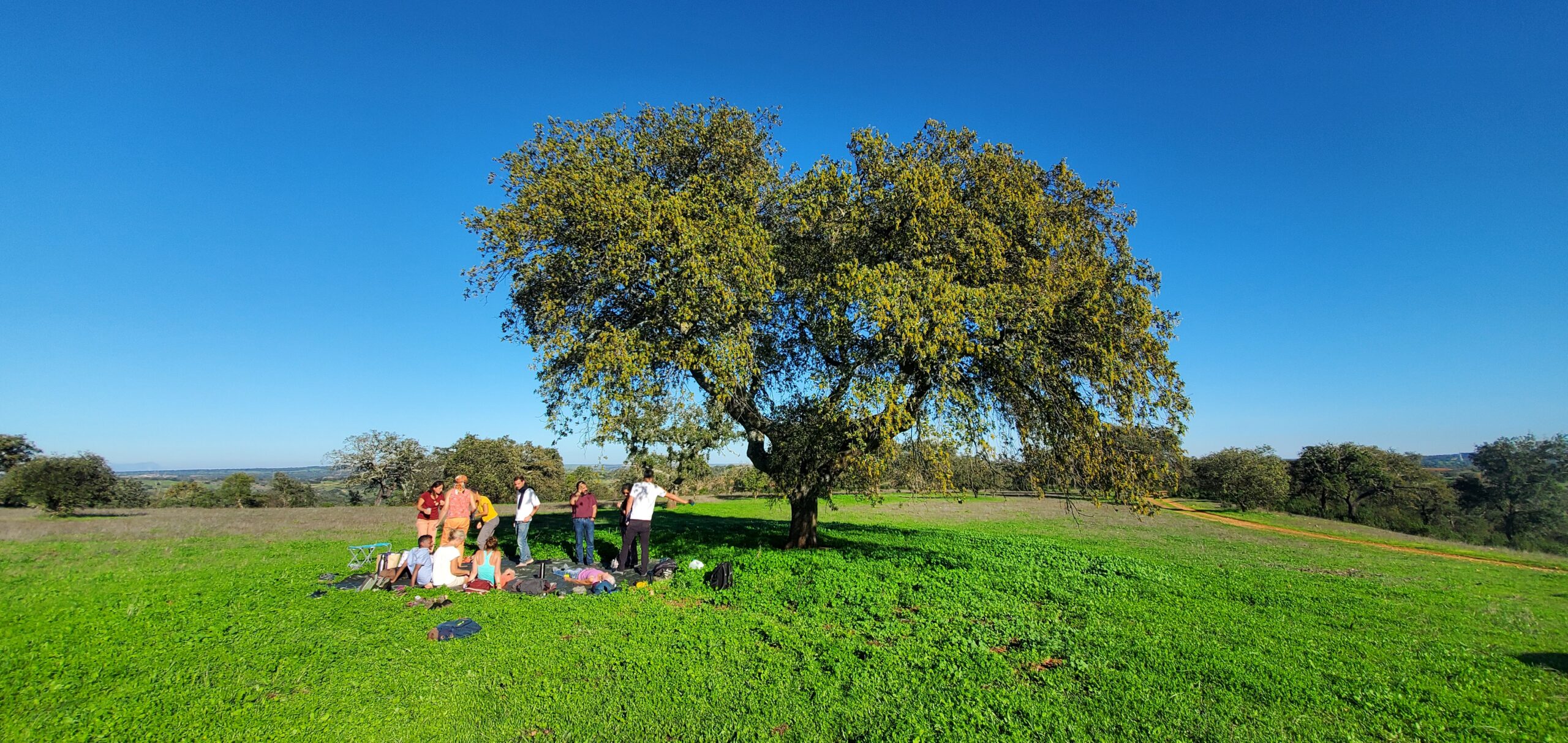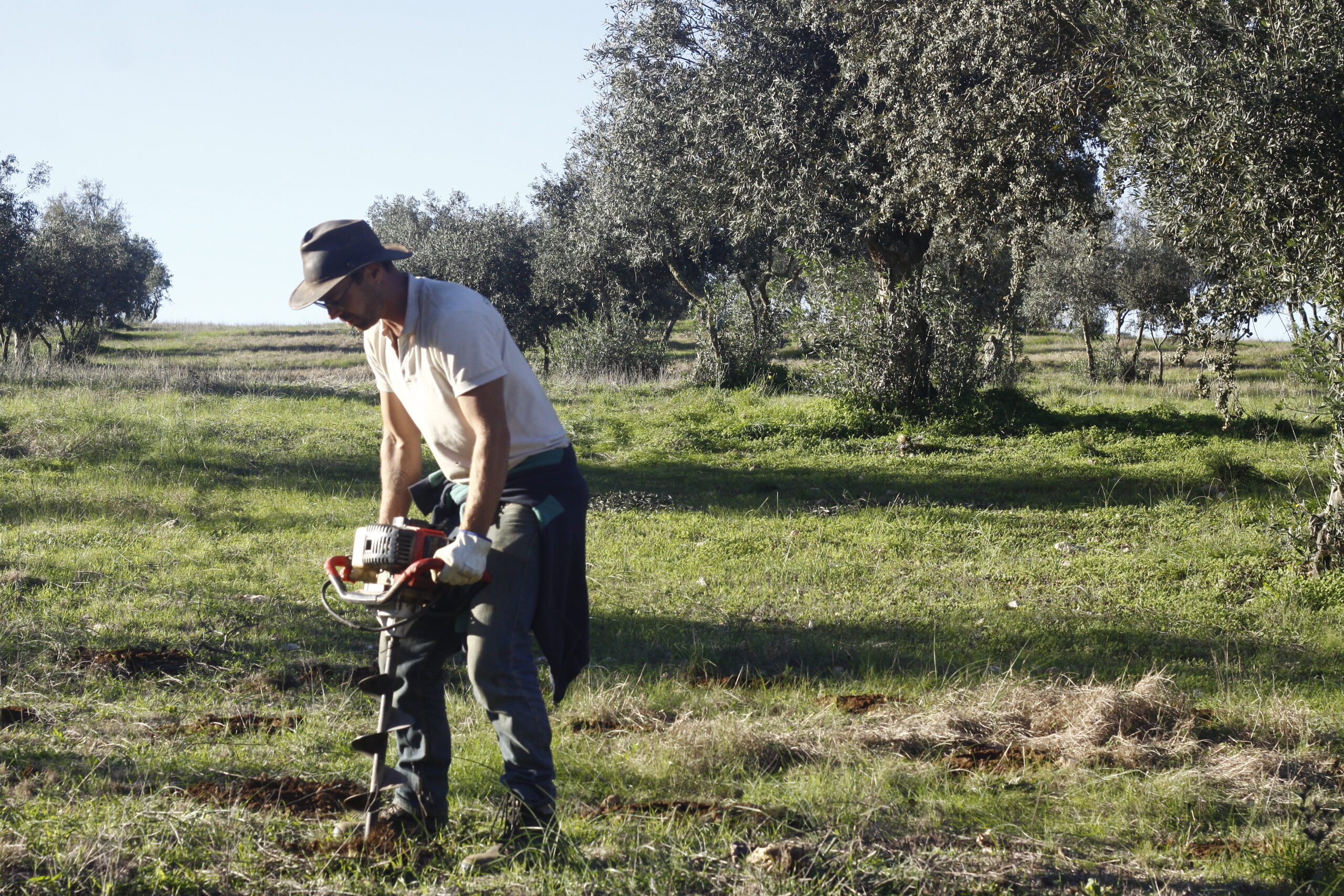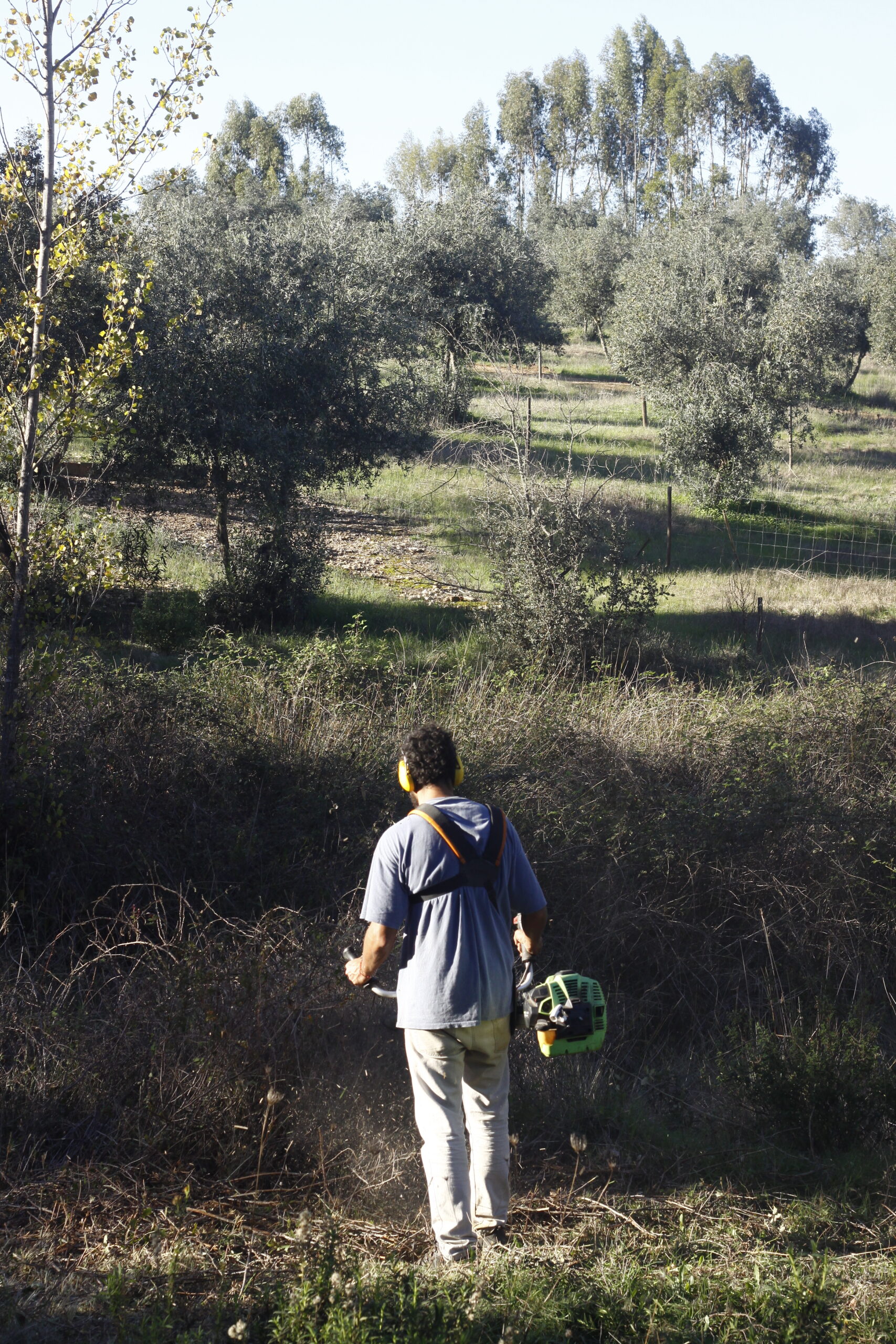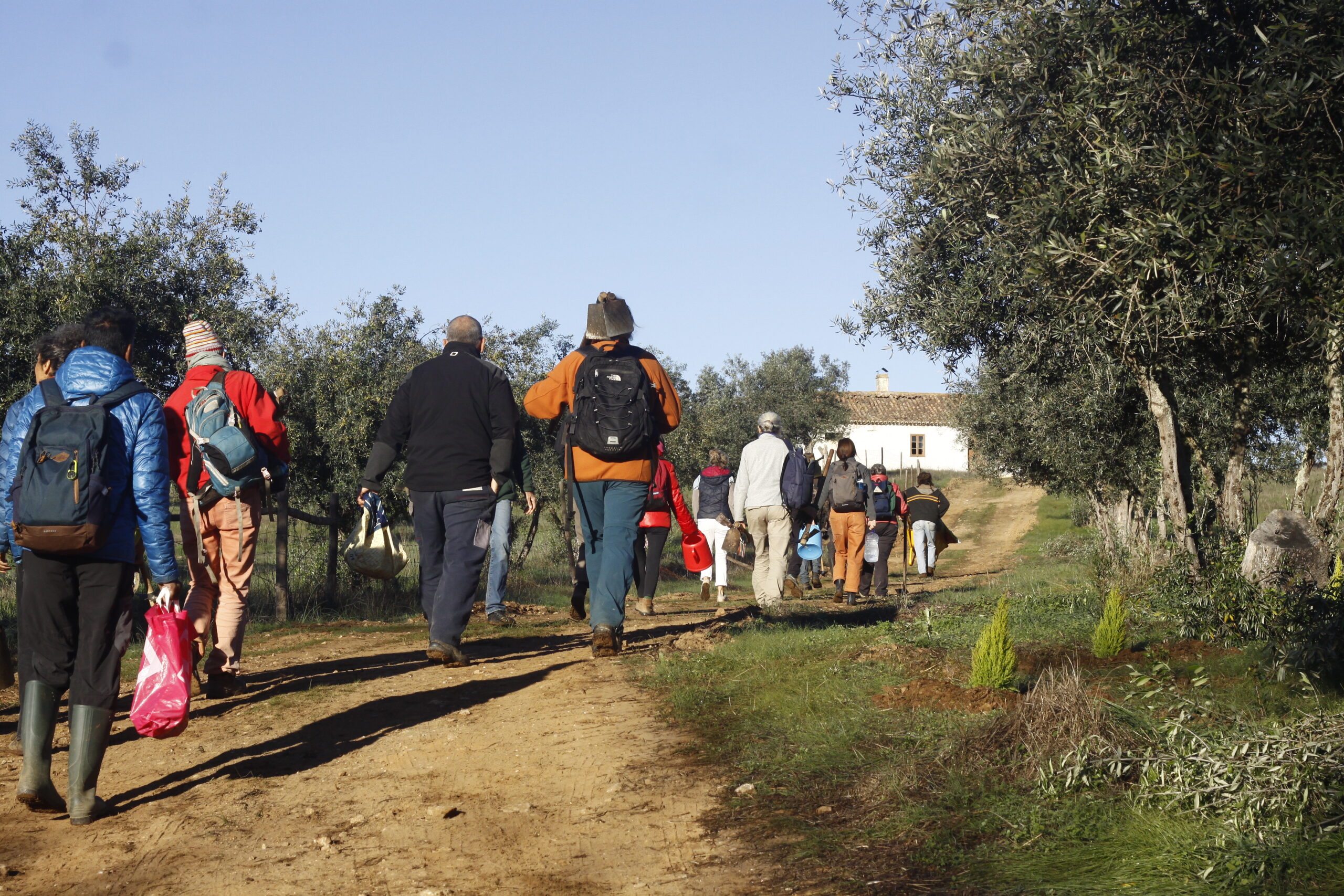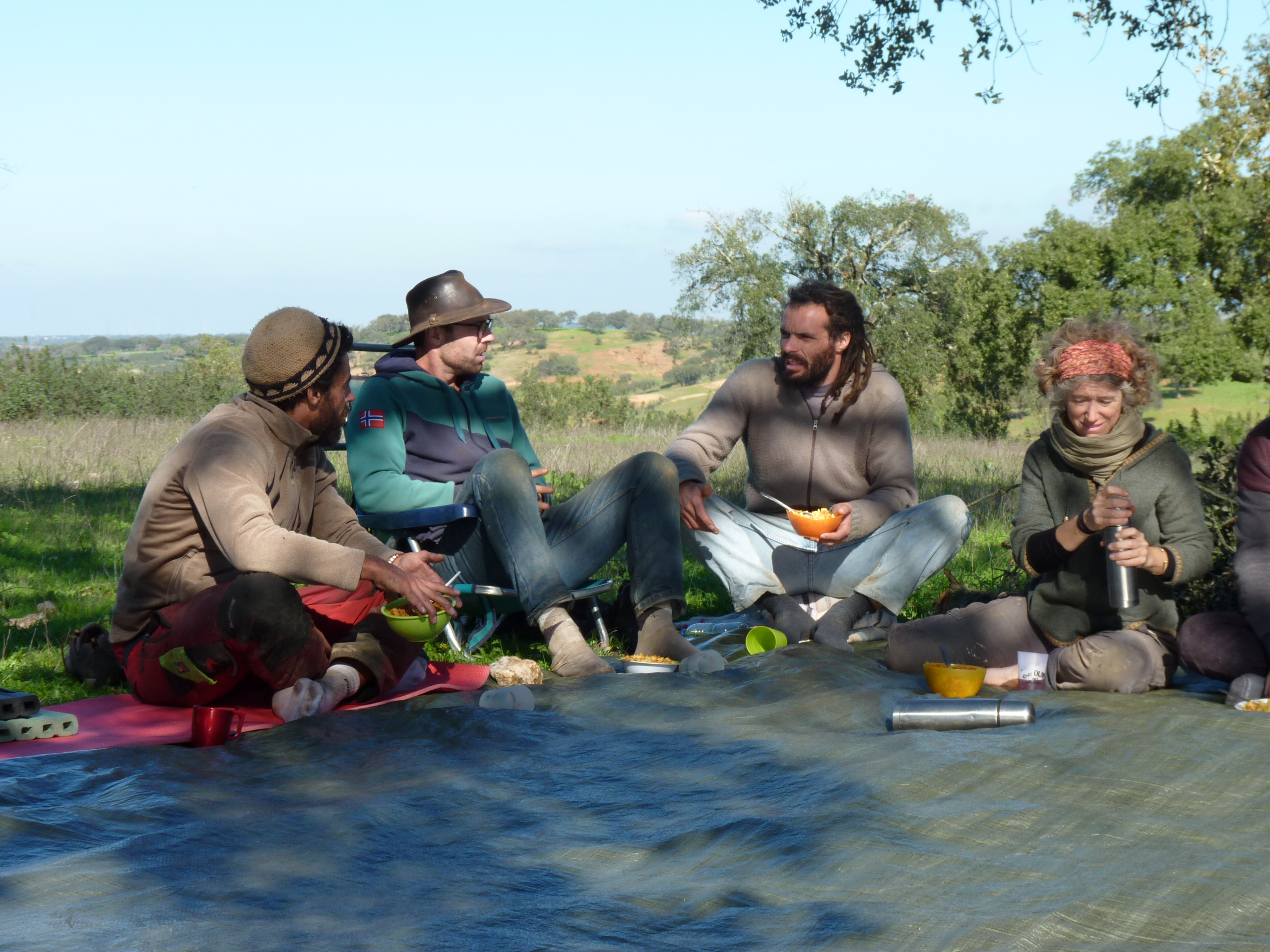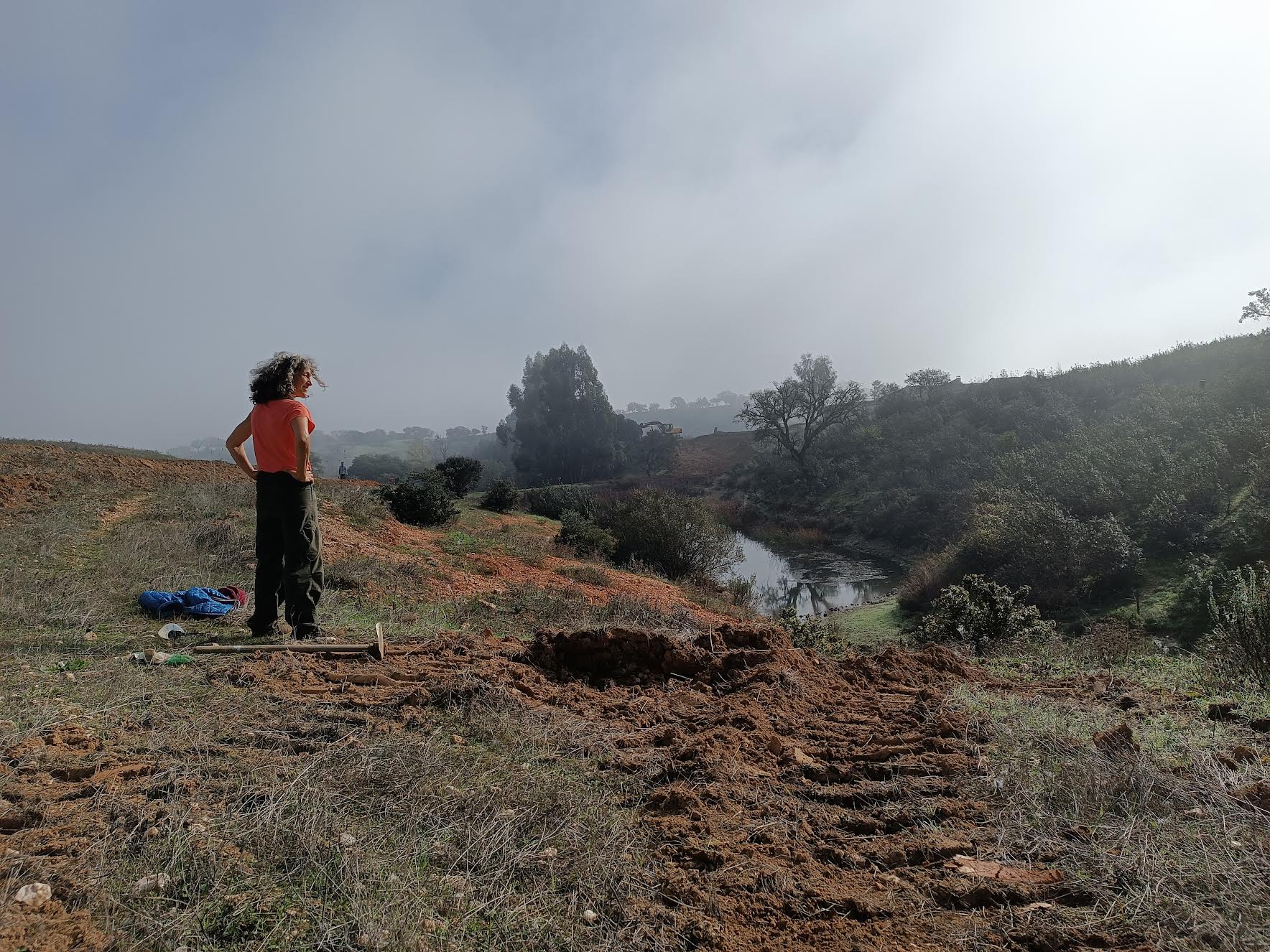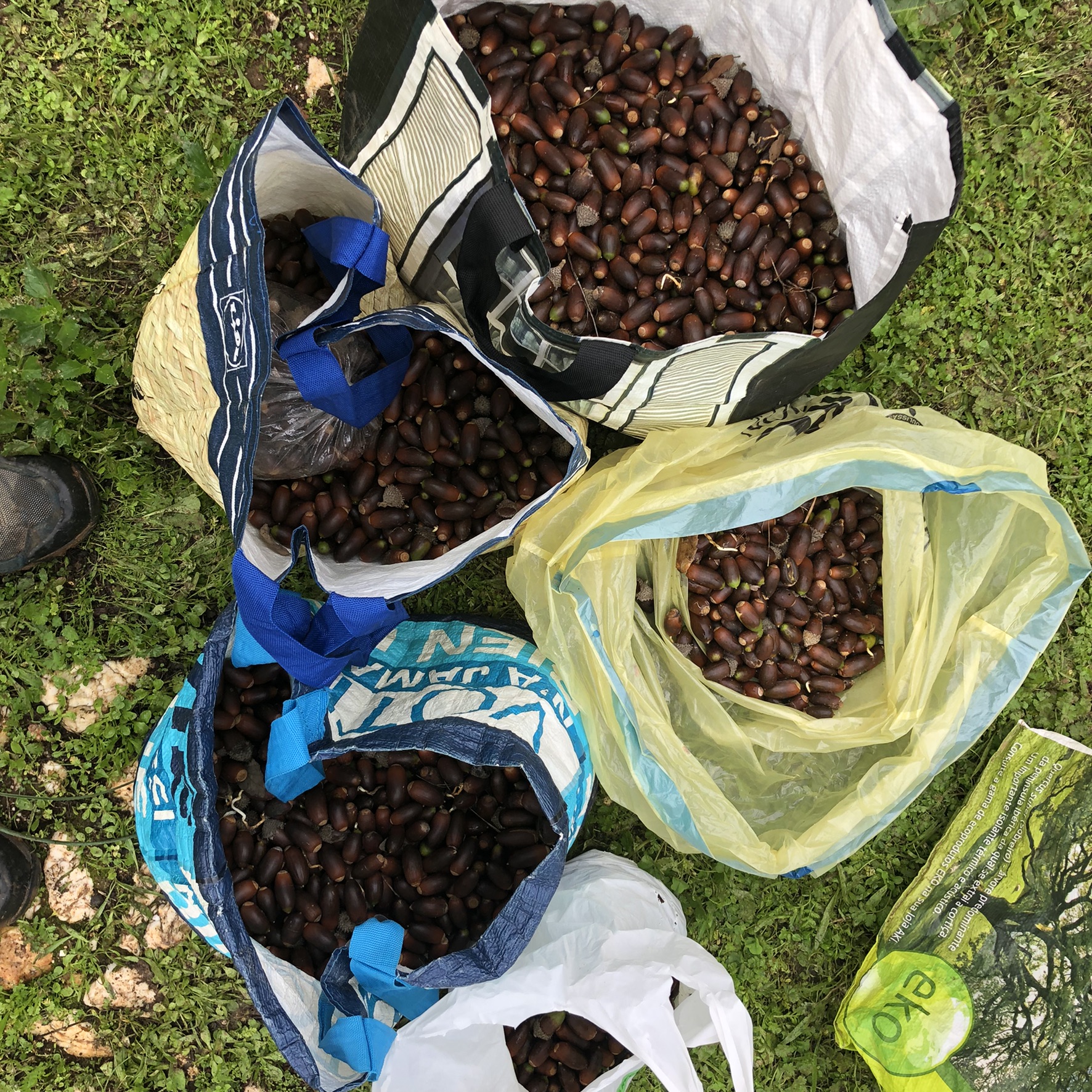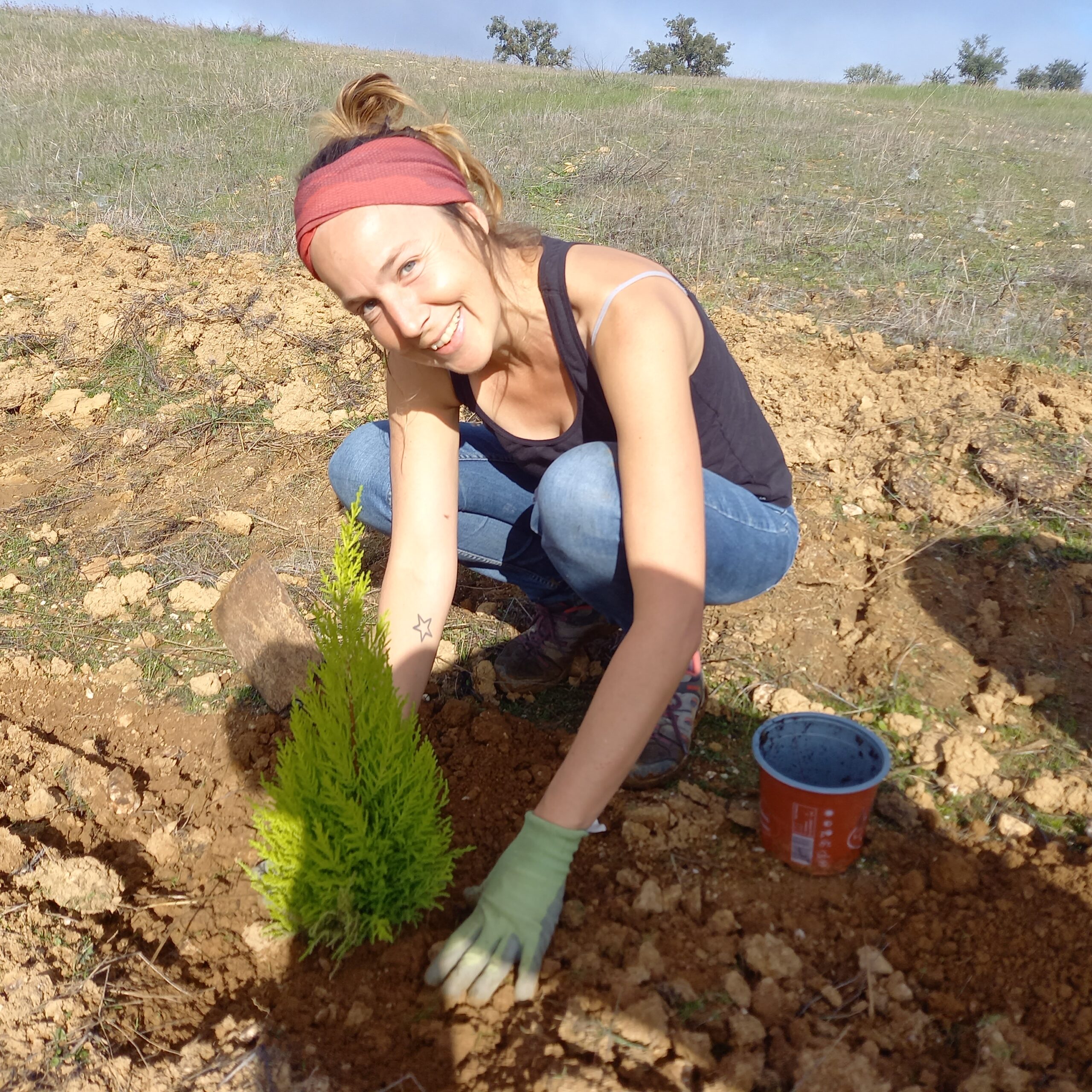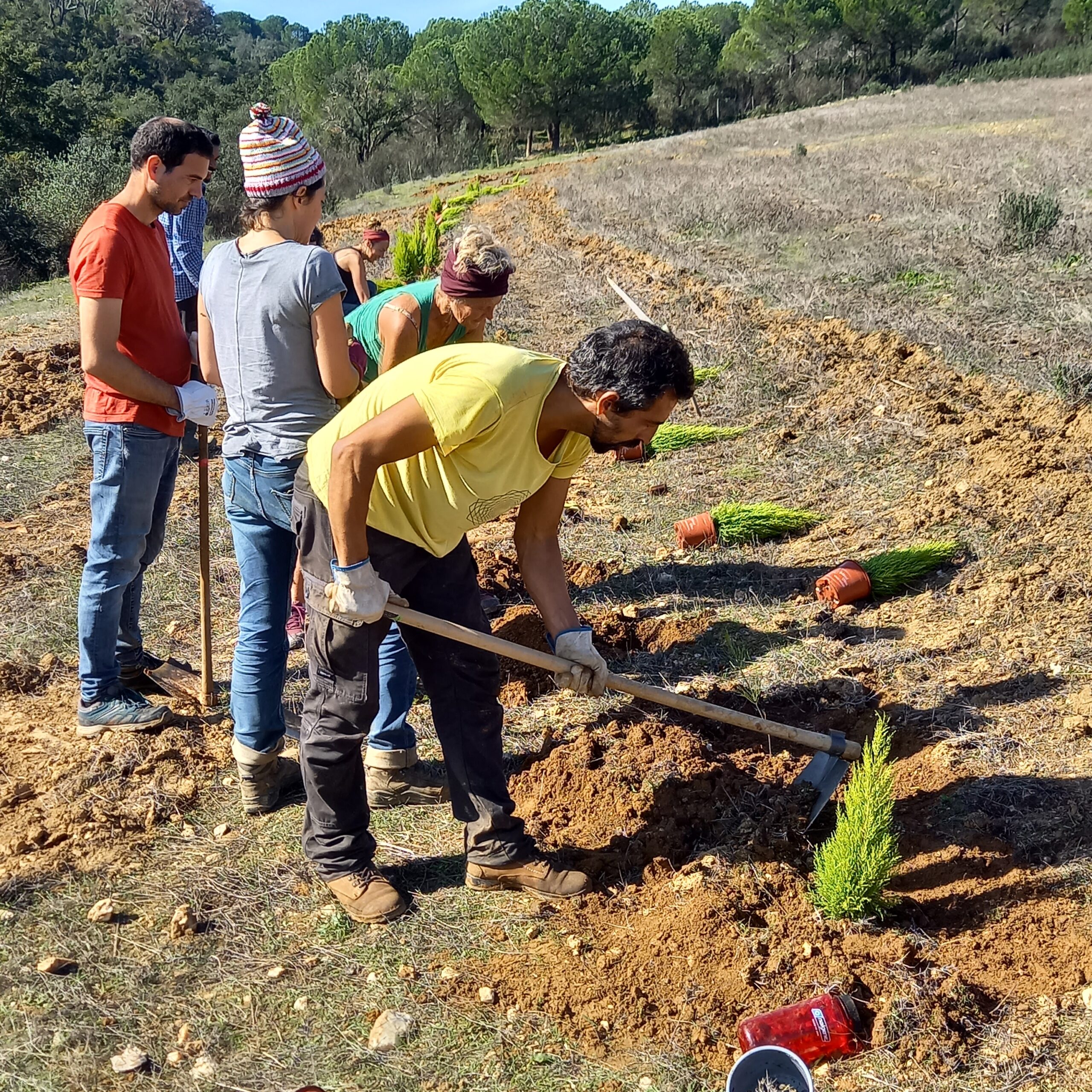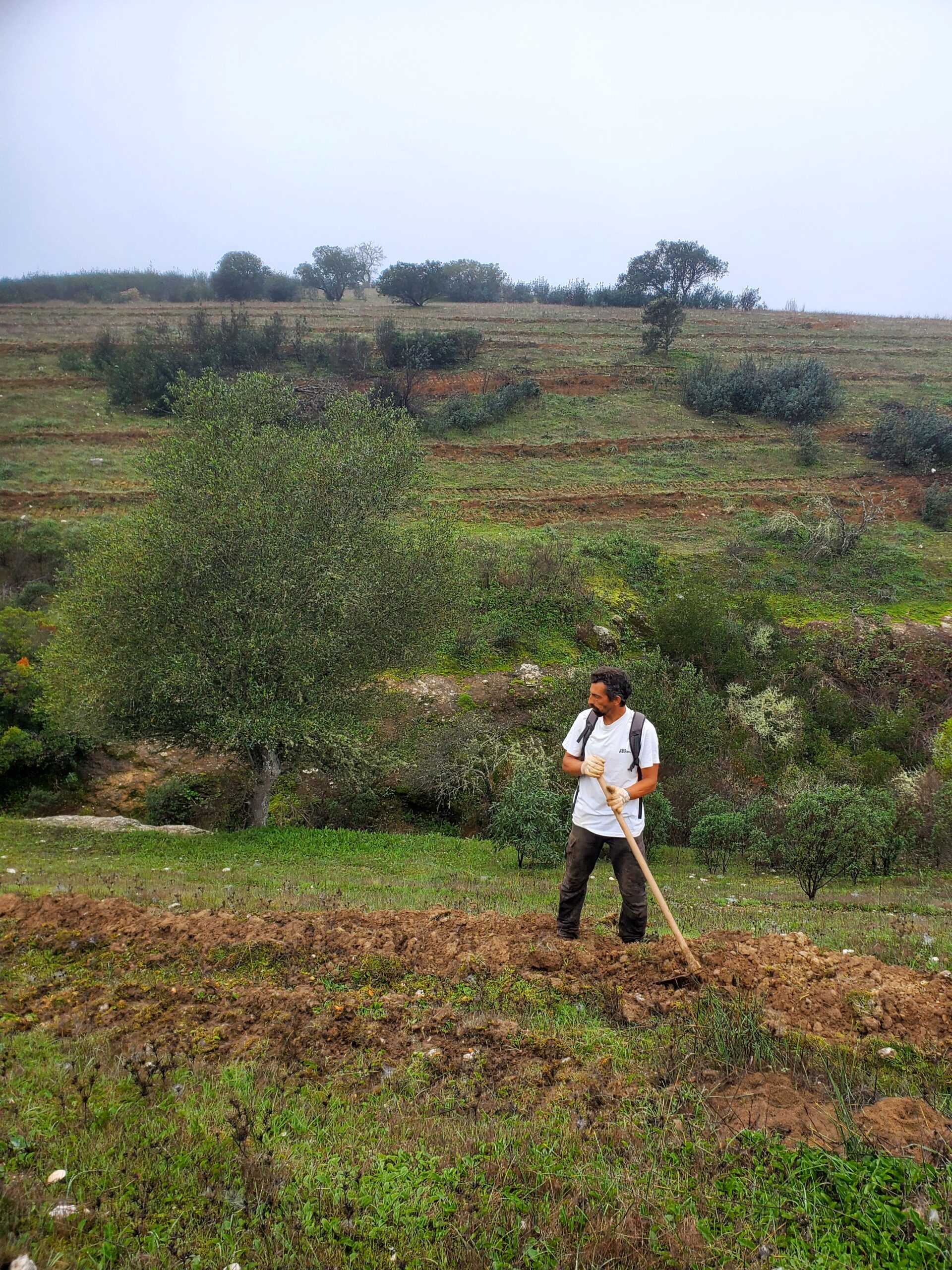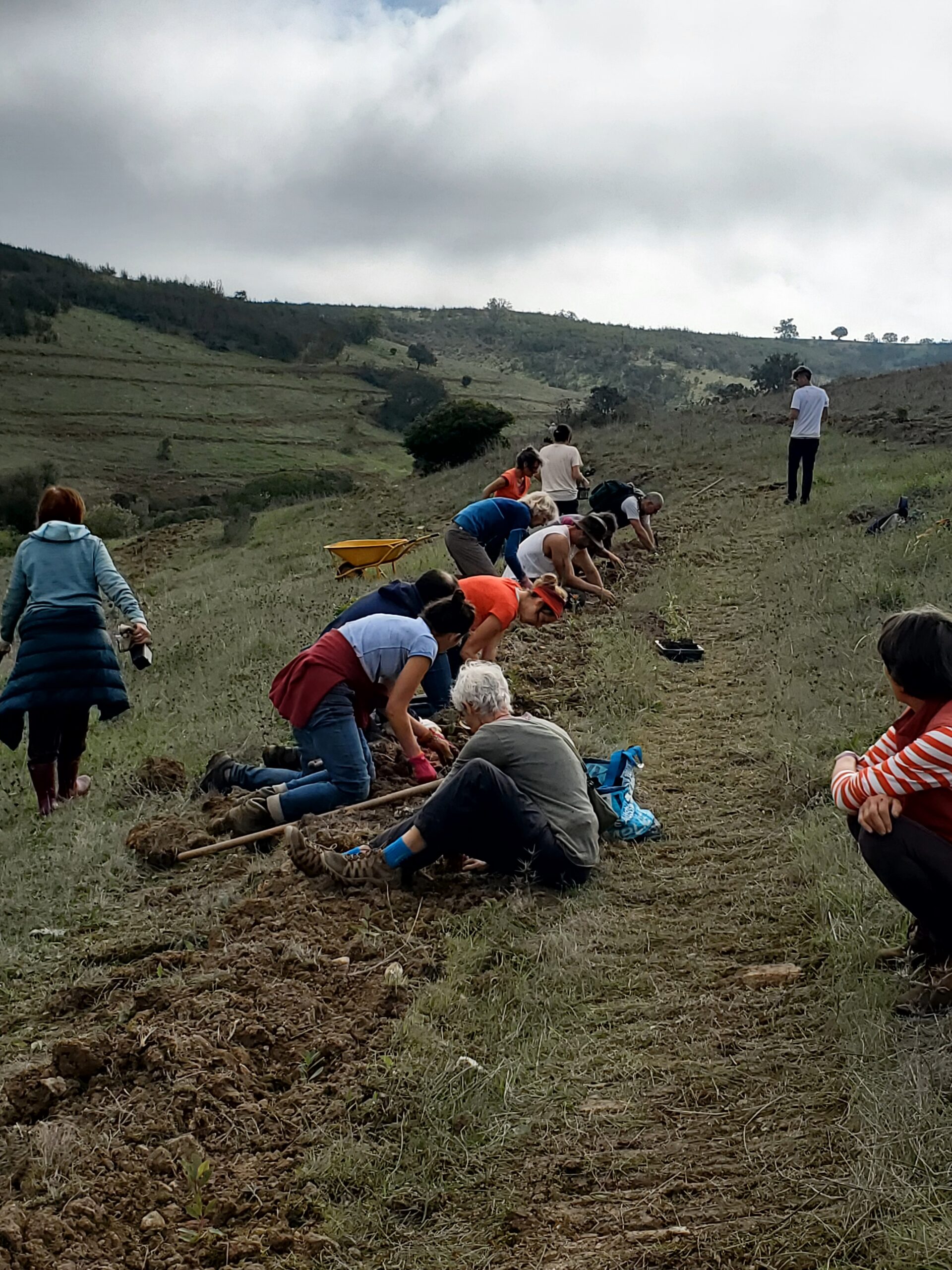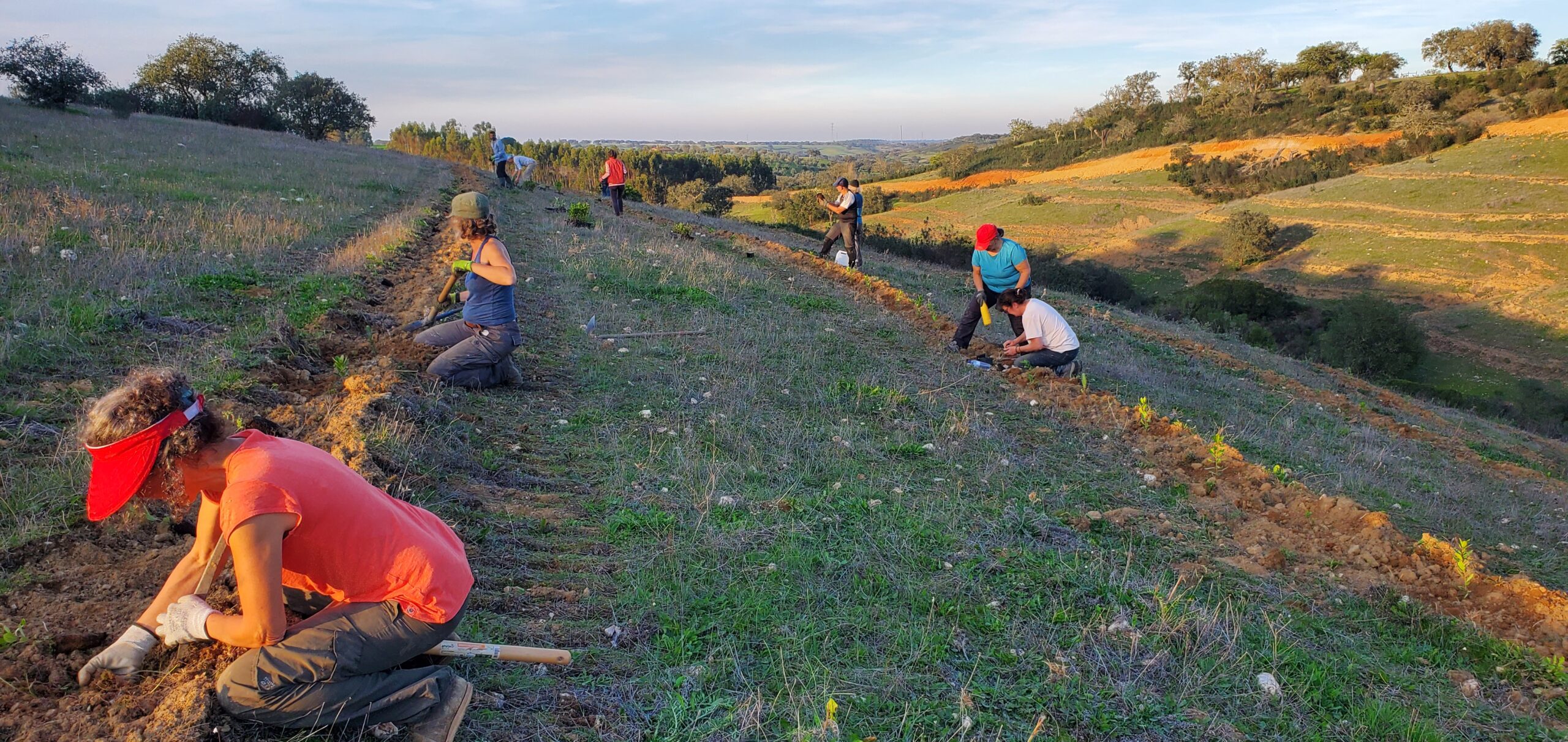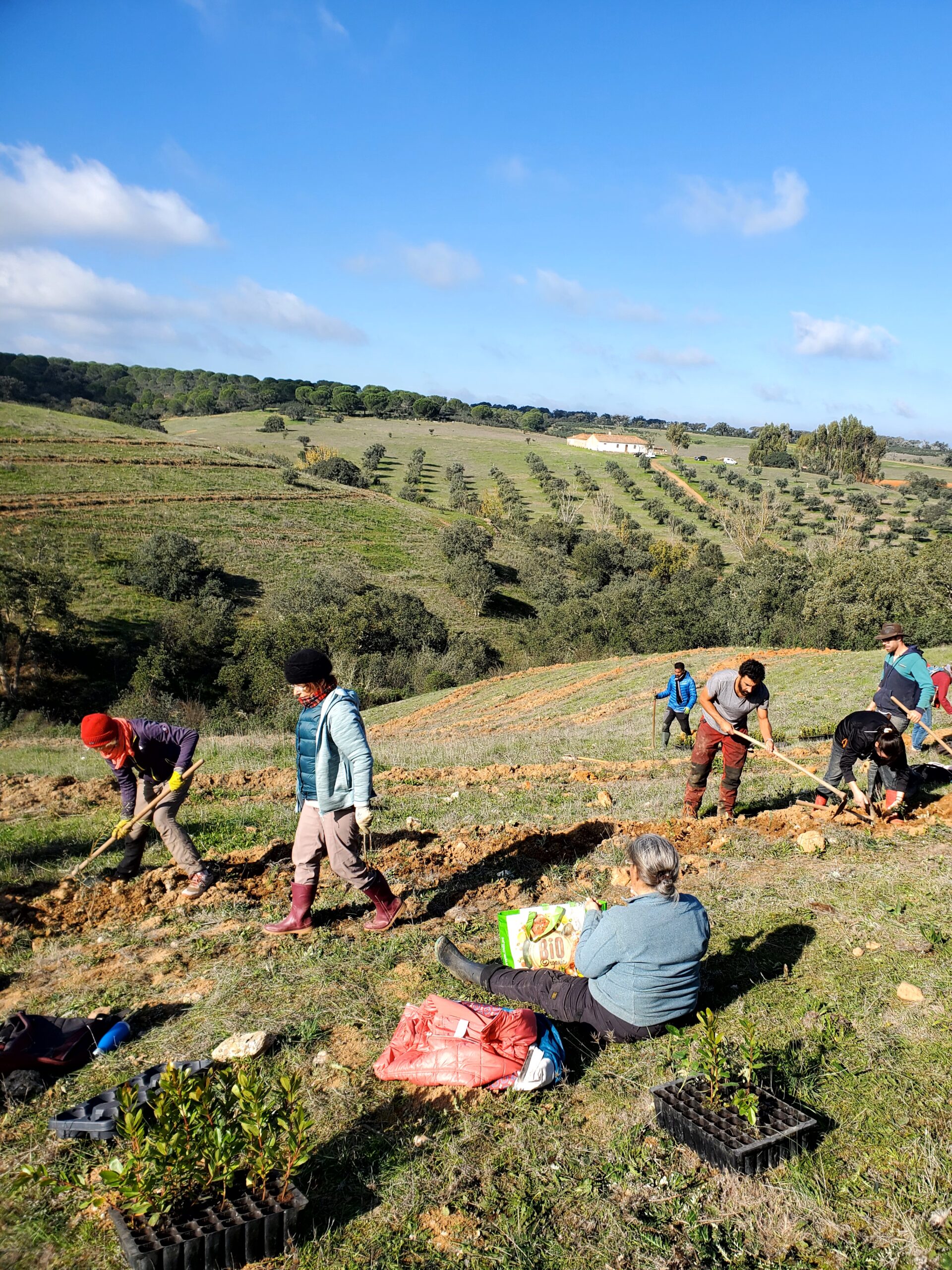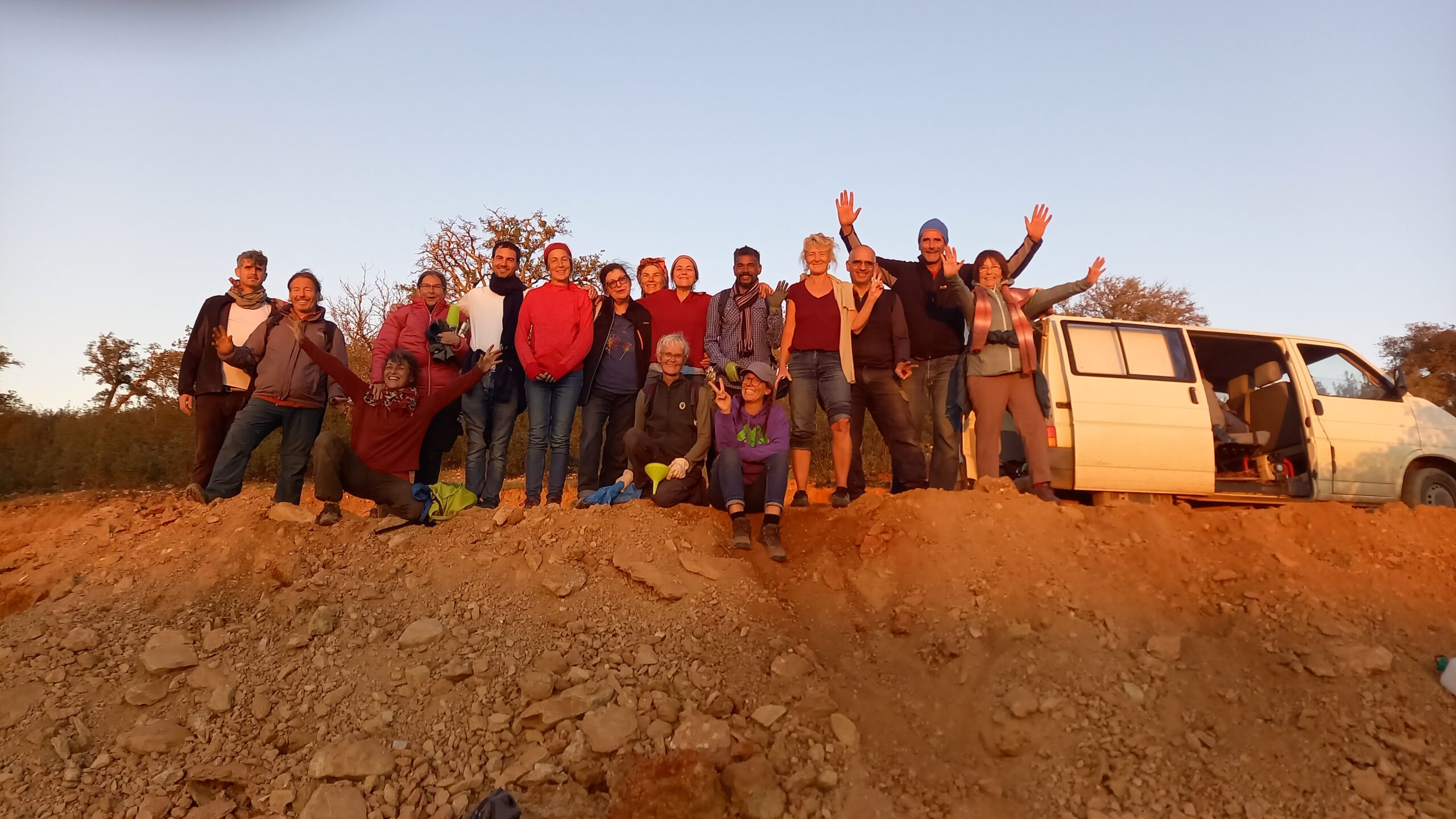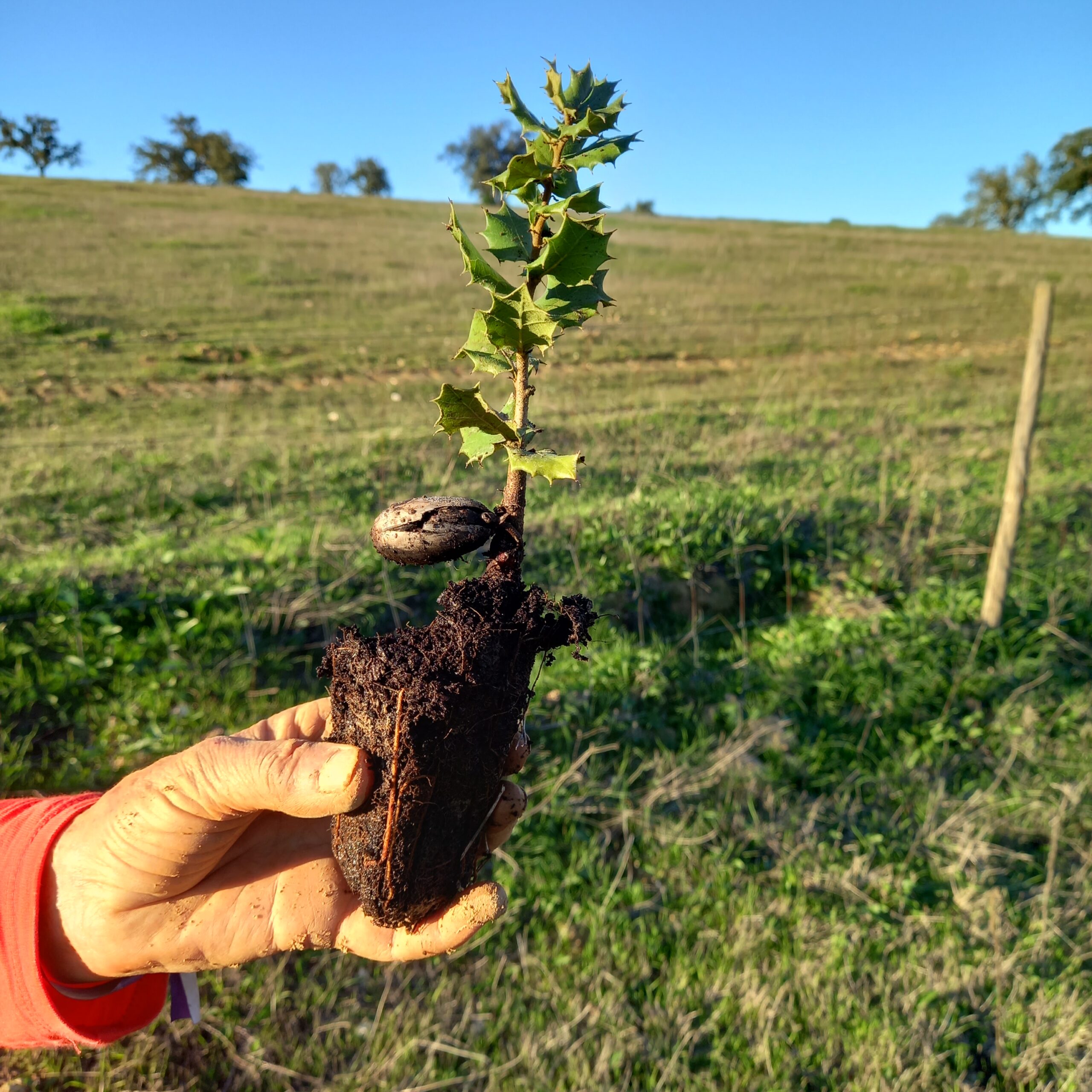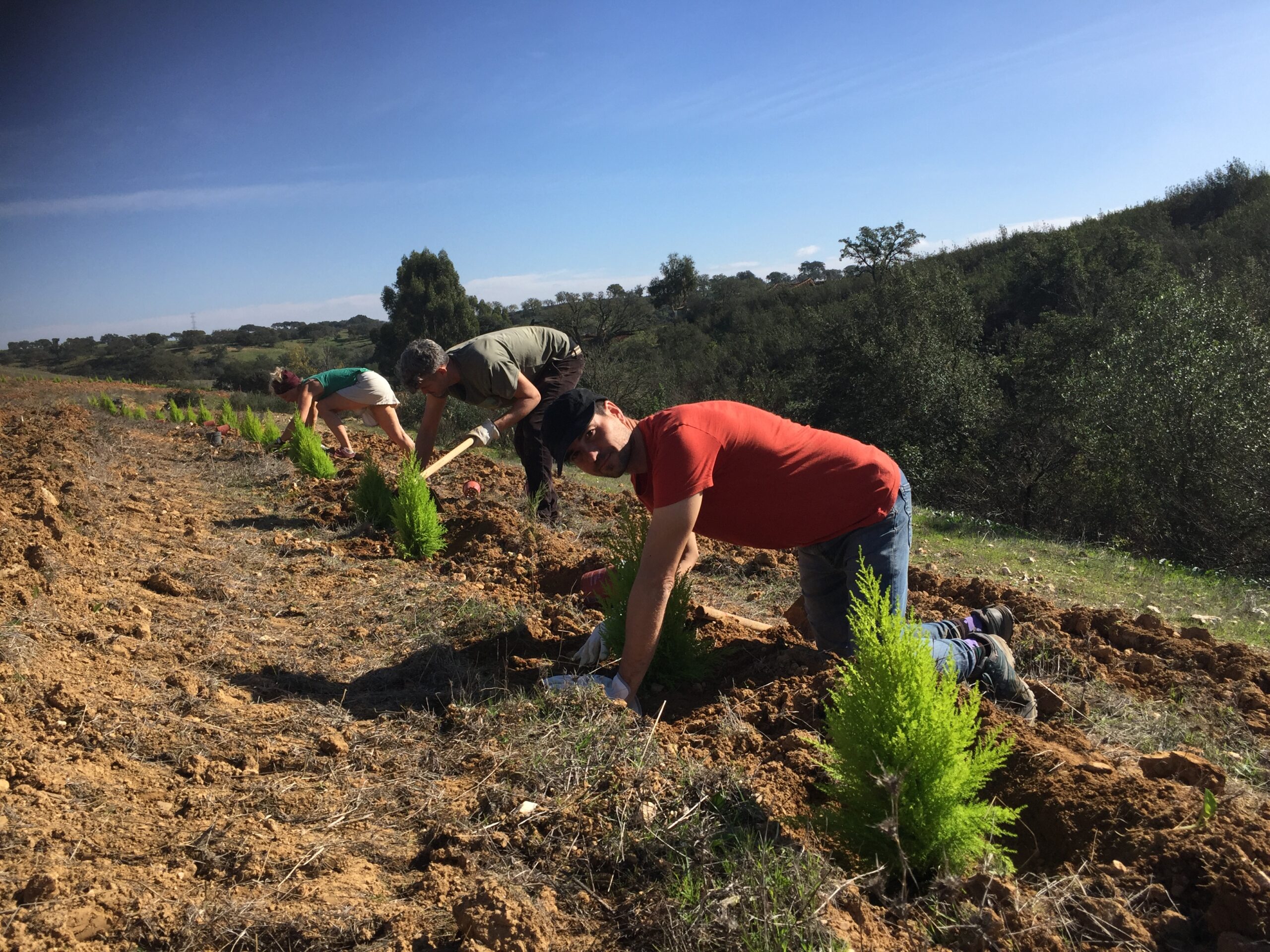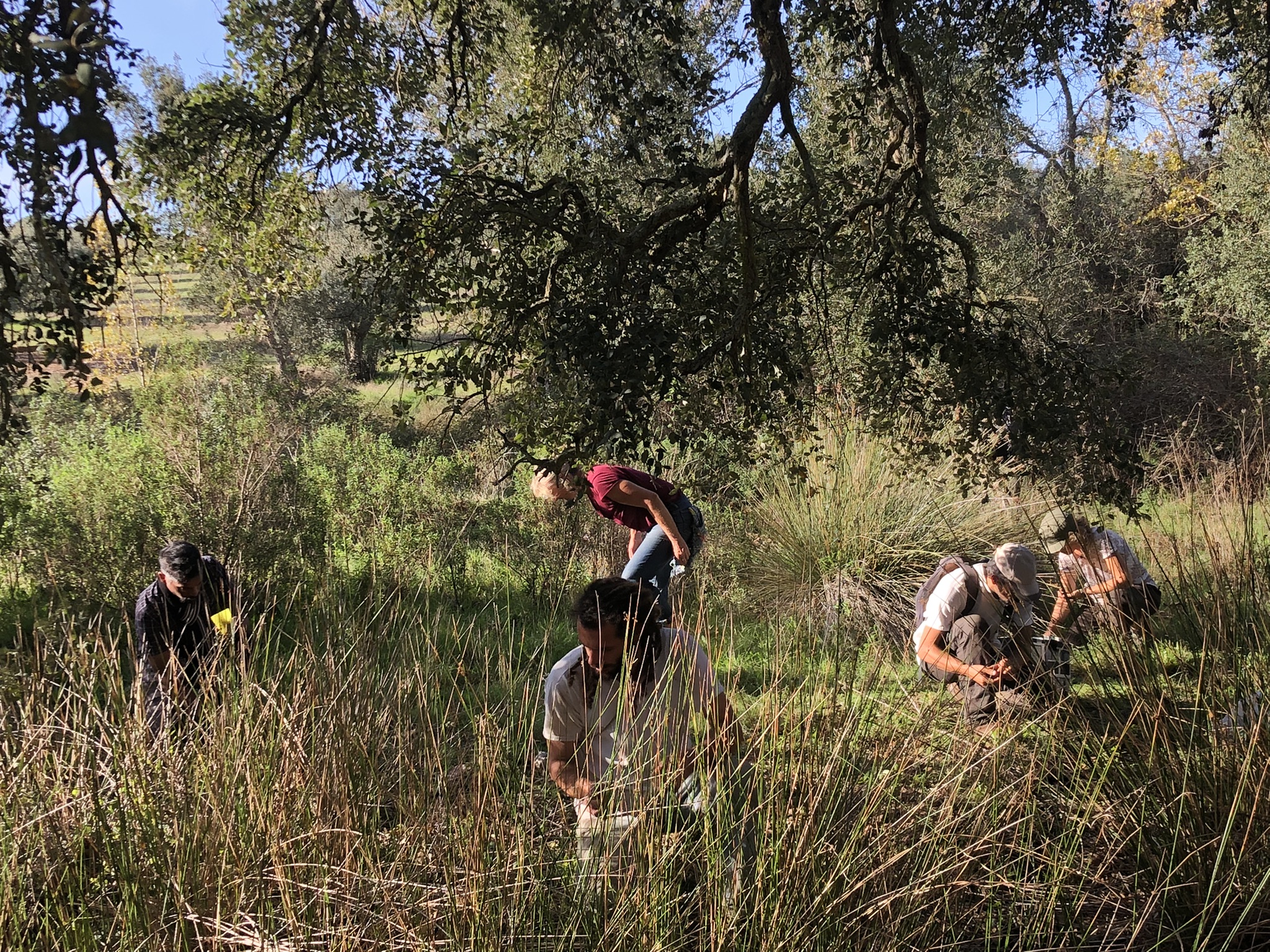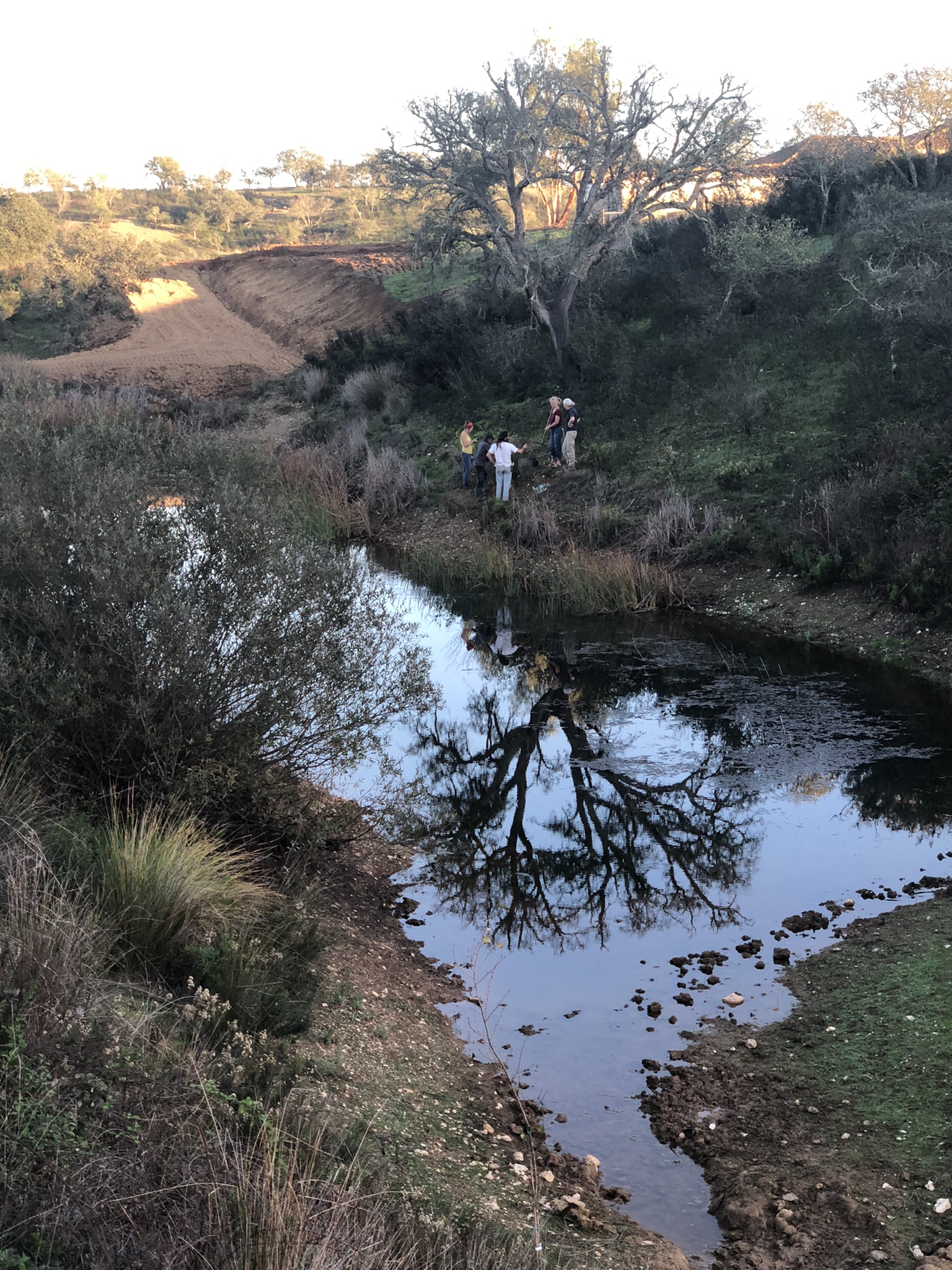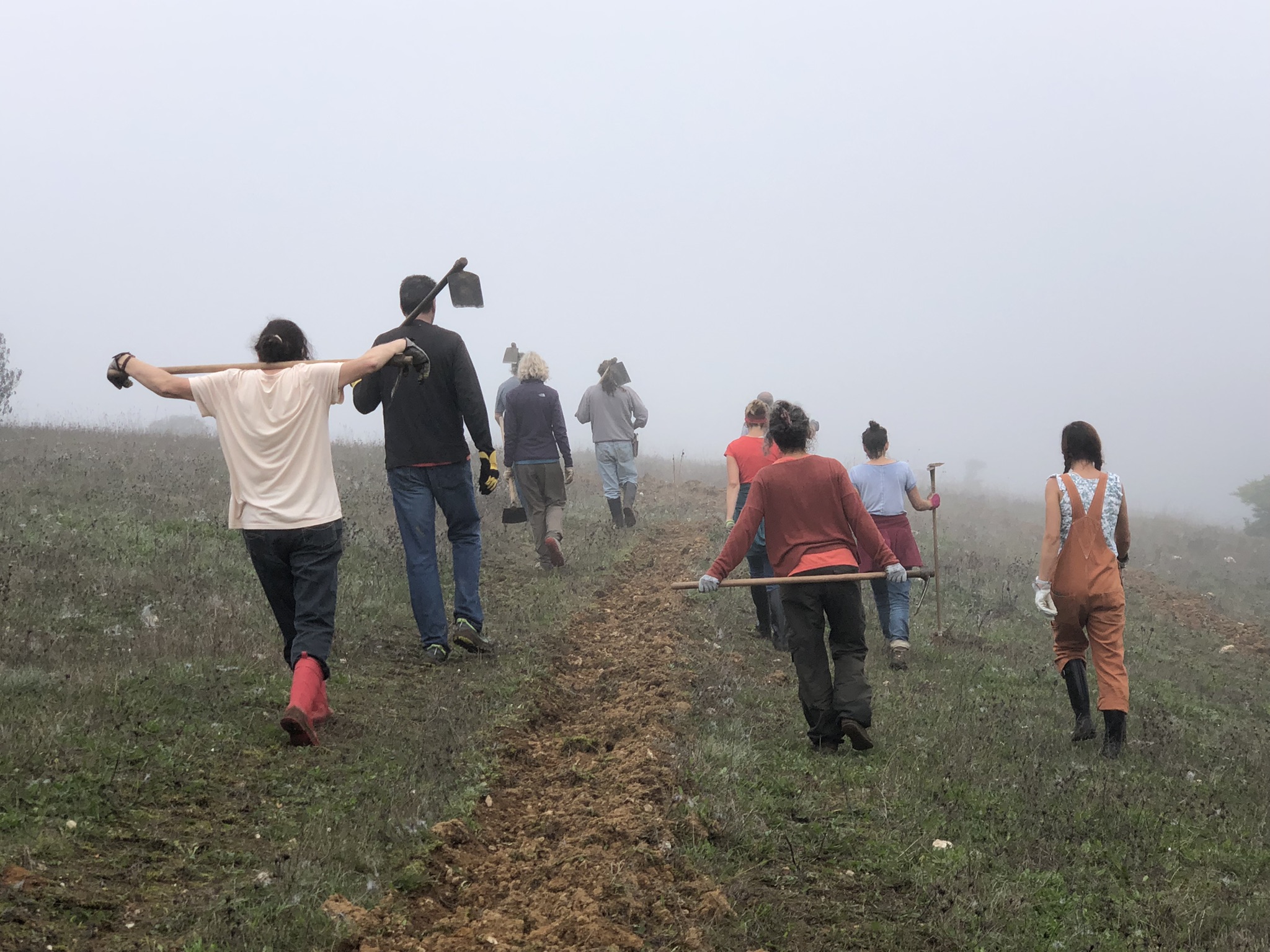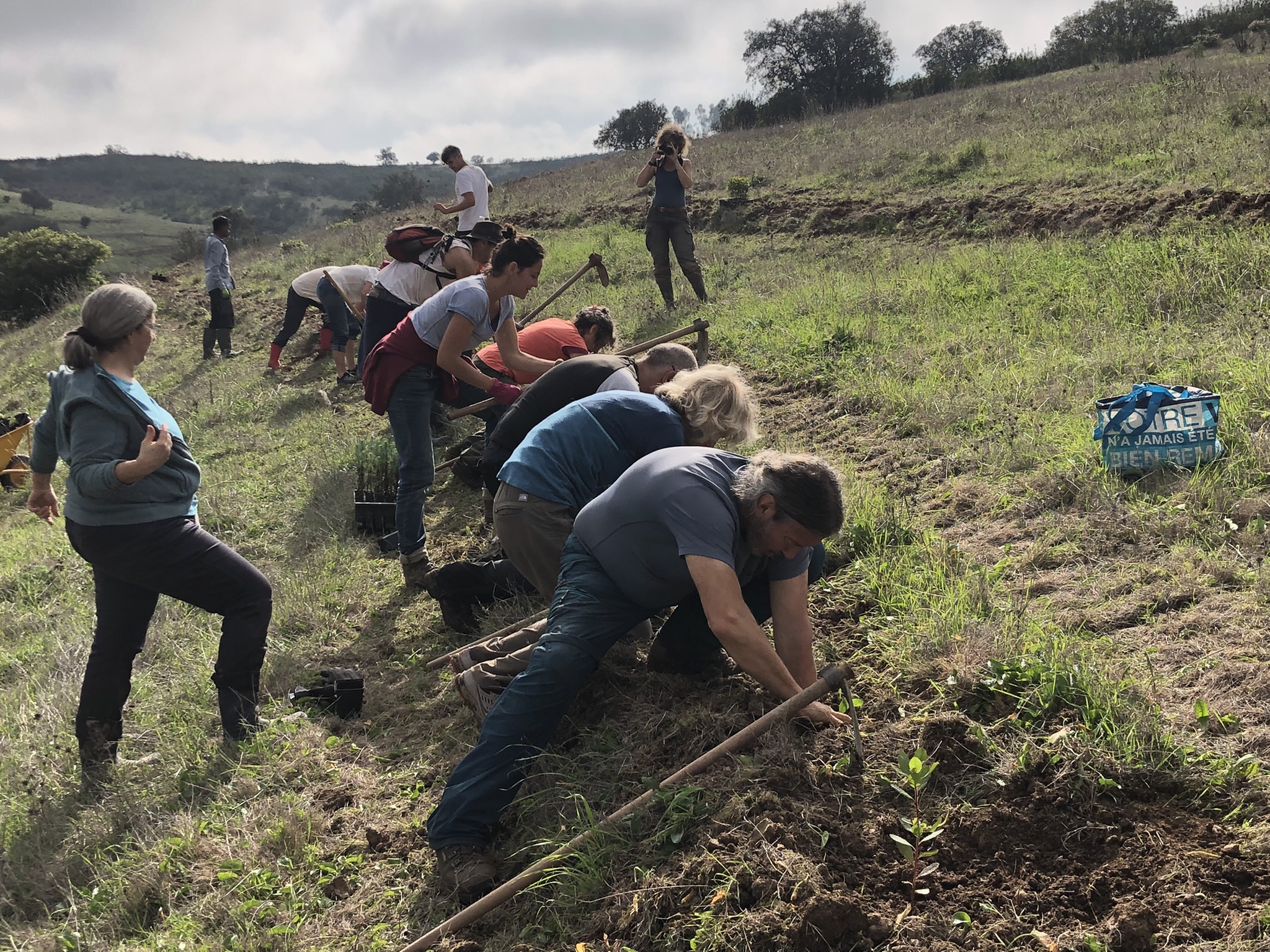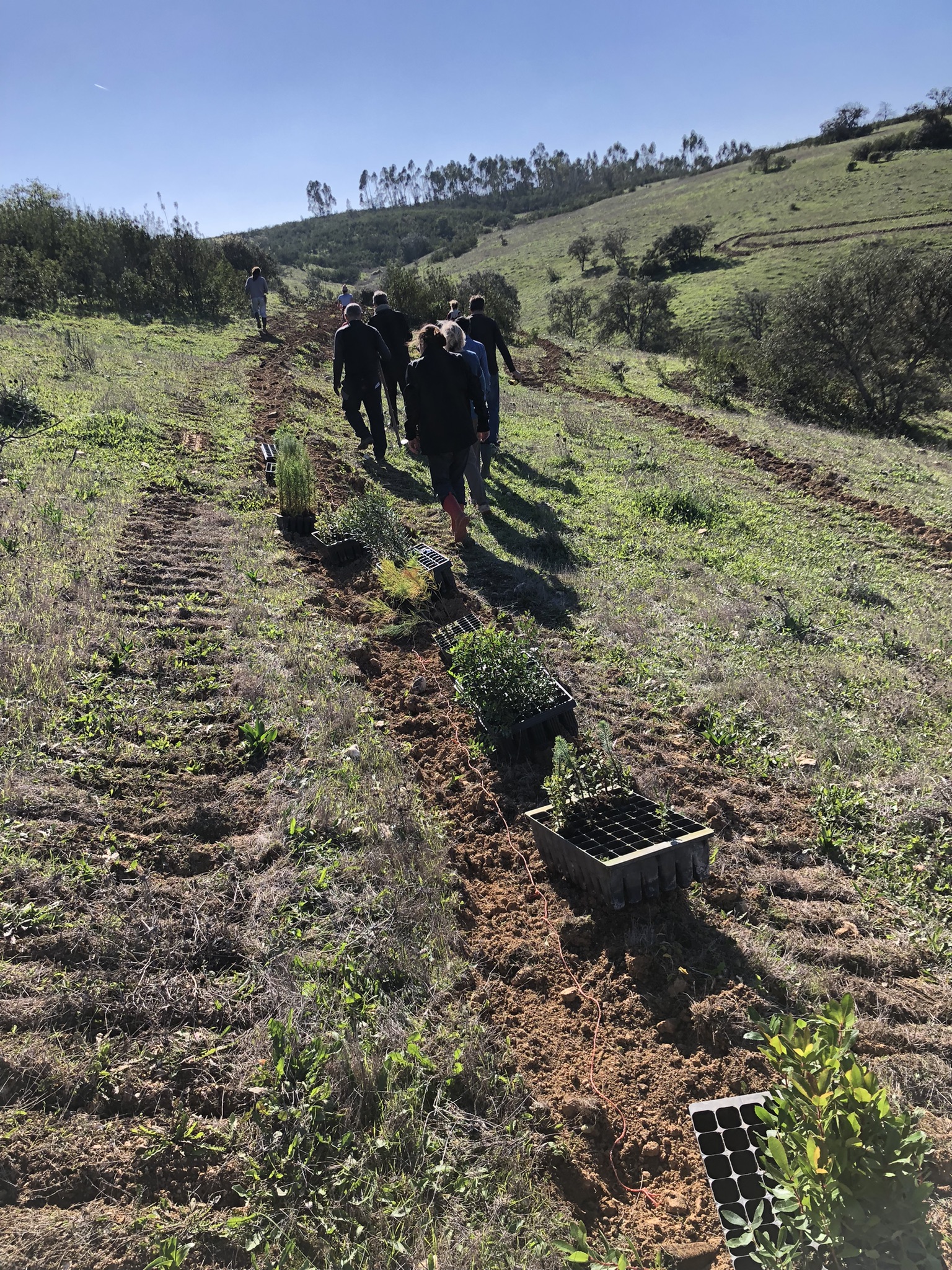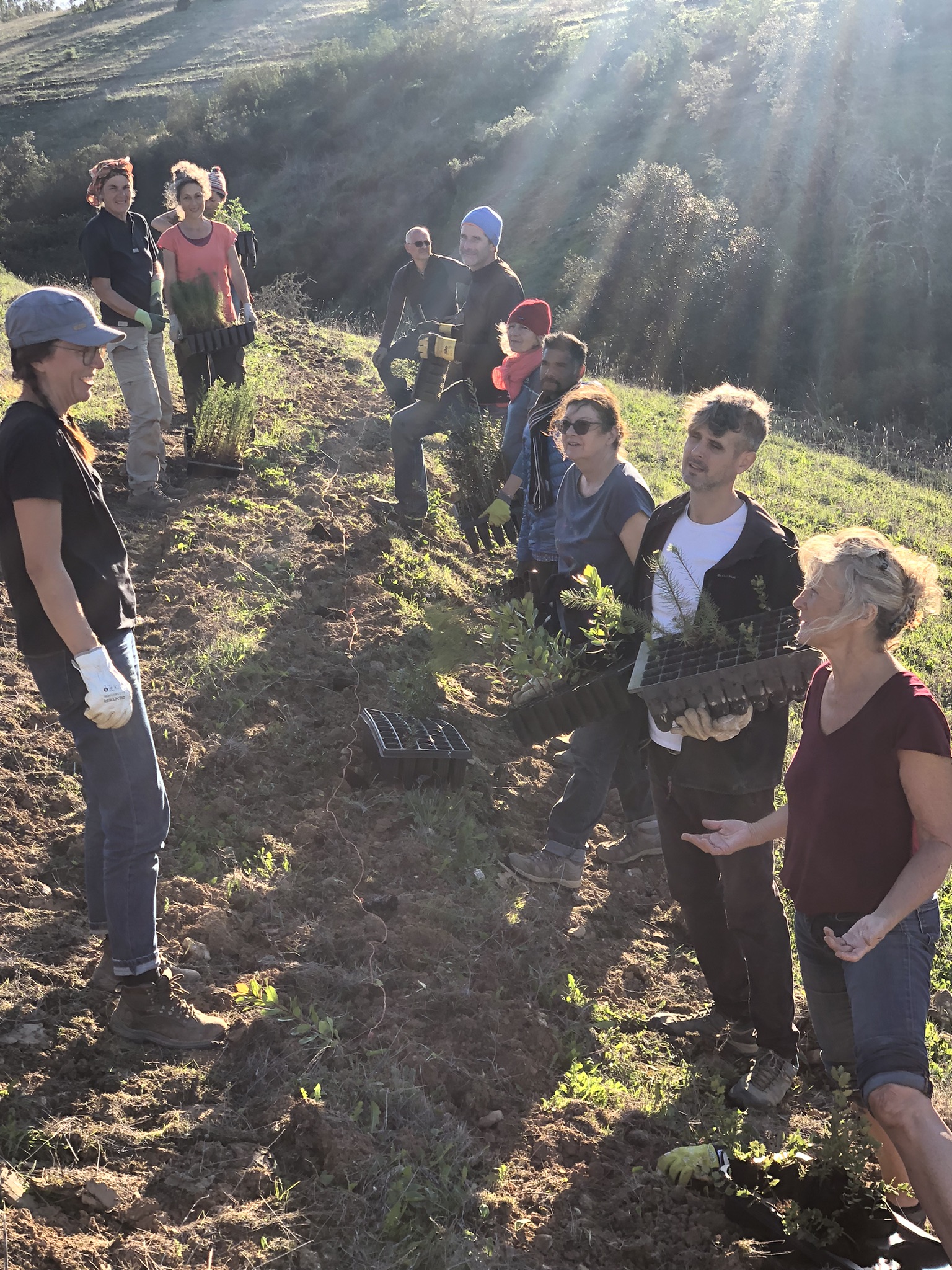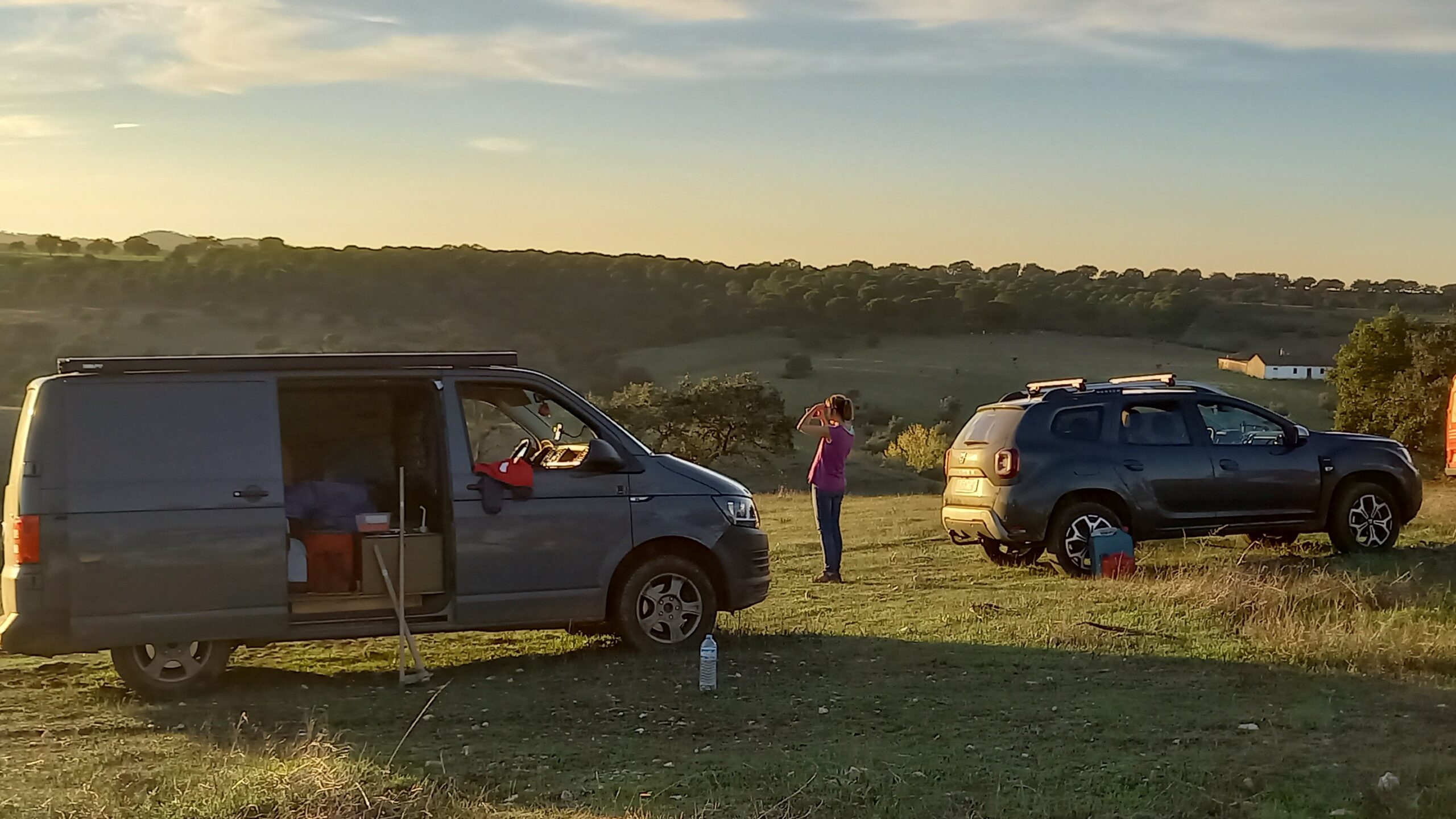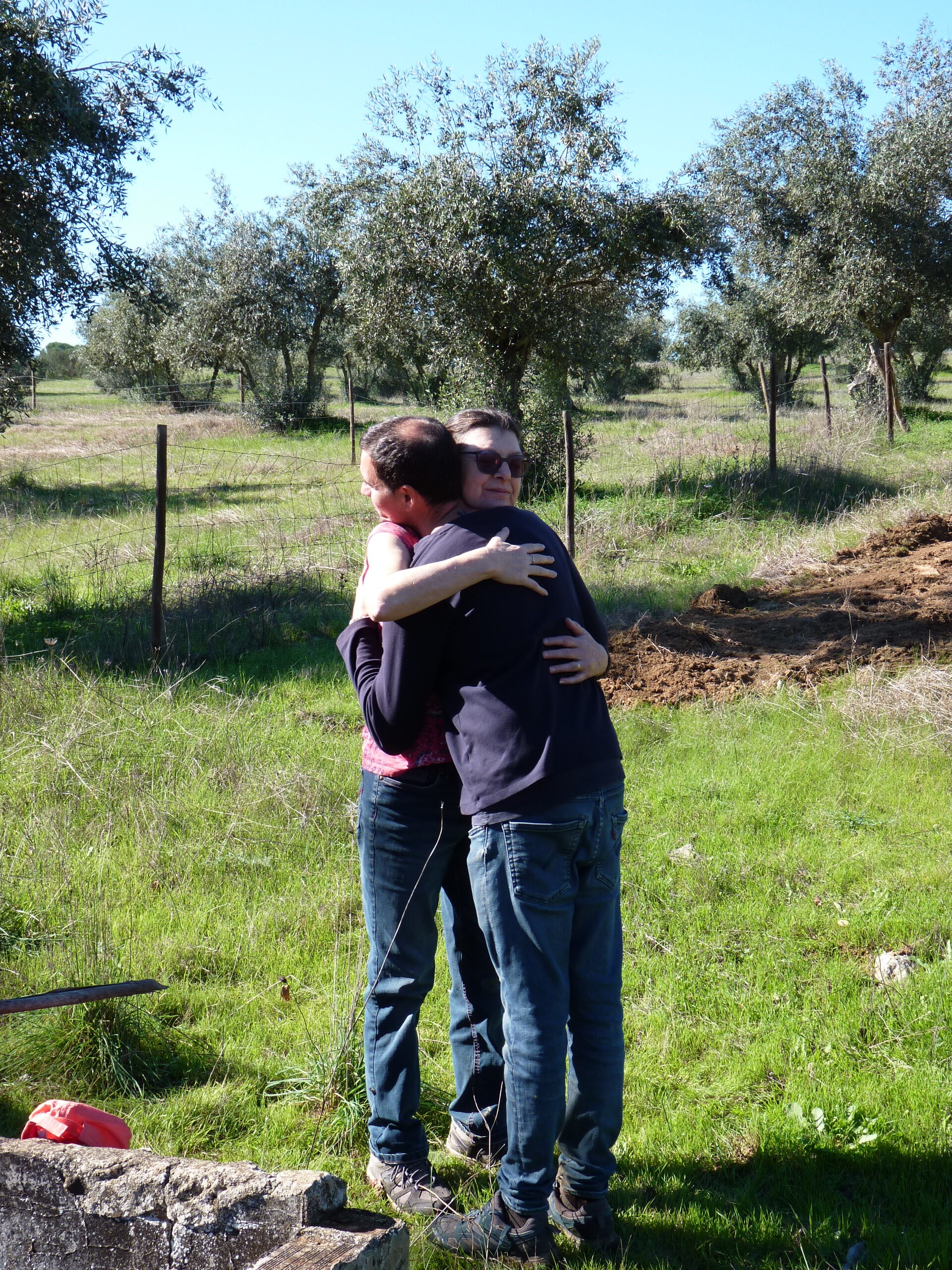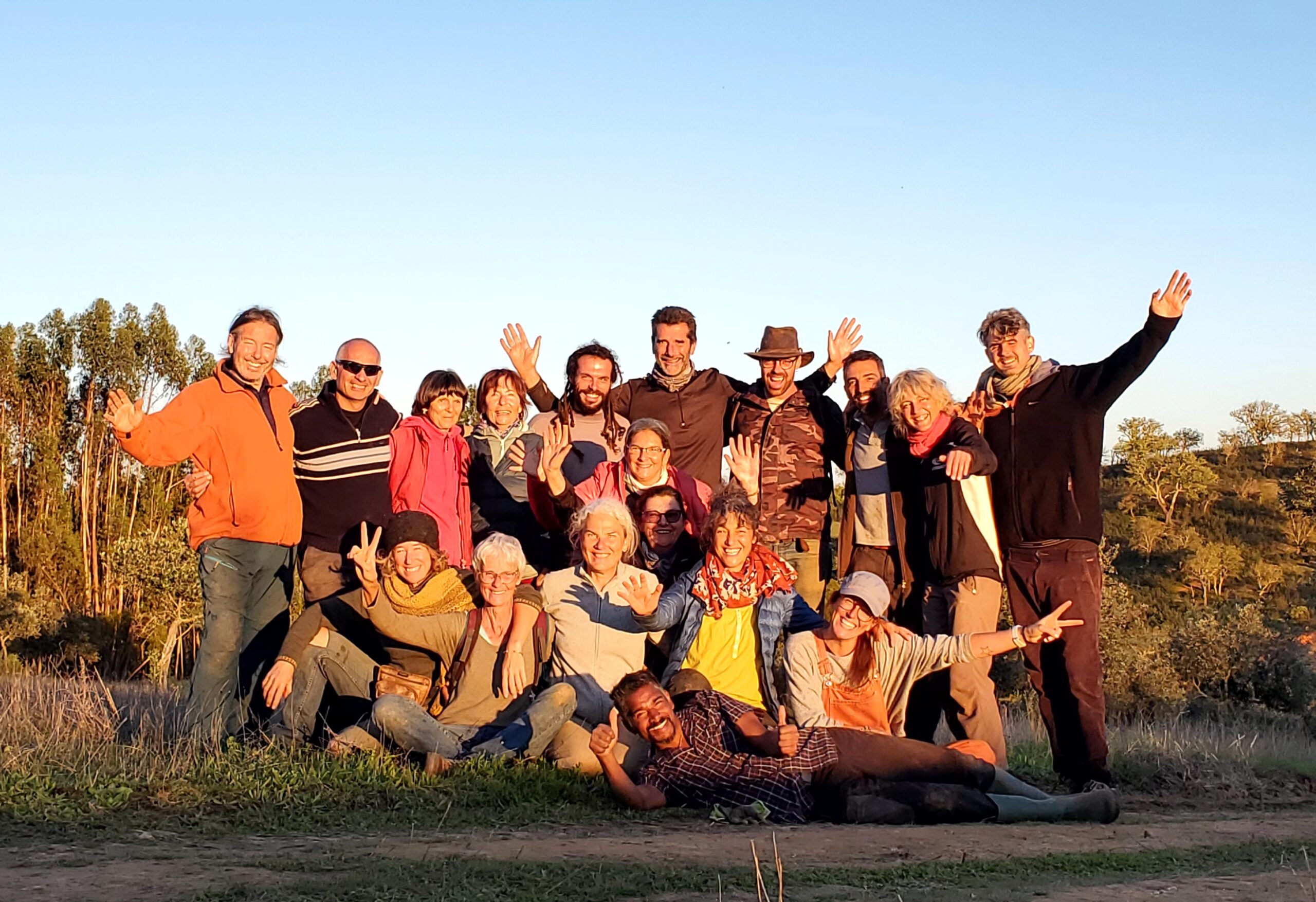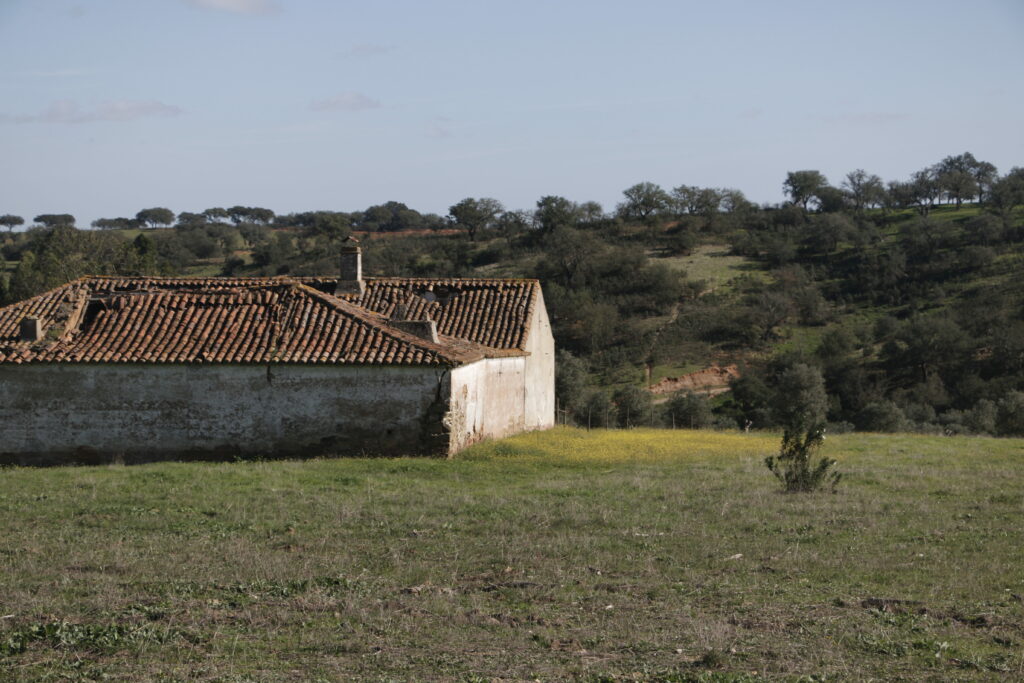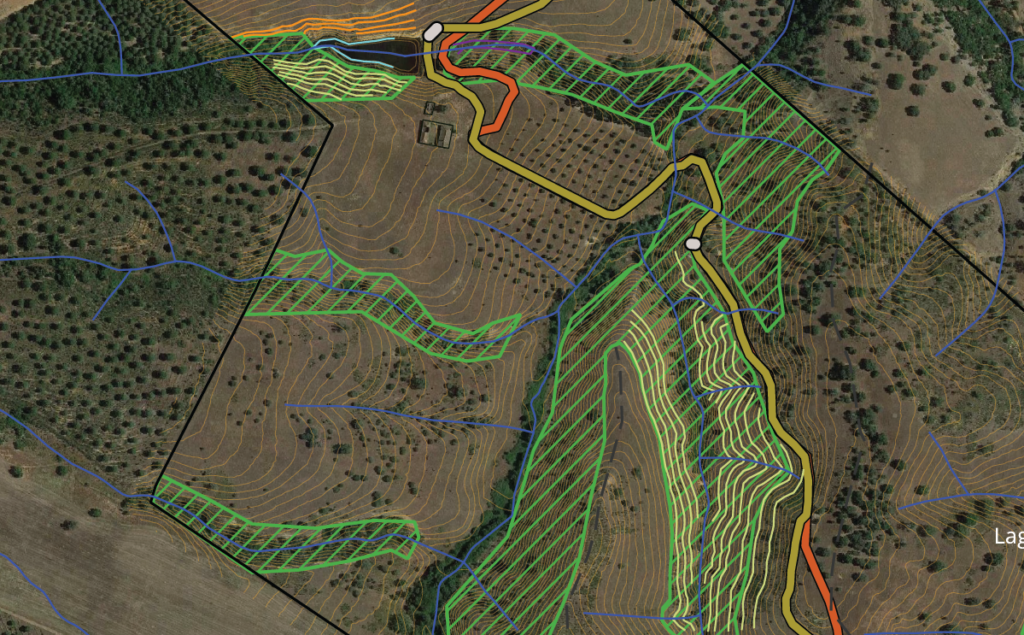Hello everyone,
Here is a short report of the first large-scale action undertaken on the land in November 2023. This article follows on from the previous one presenting the project to plant more than 6.000 trees and shrubs, and to prune trees over an area of 10 hectares, which you can find by clicking here.
In November 2023, we launched a major participatory work session in the field, bringing together 16 volunteers and 4 members of André Vizinho’s team for 2 weeks.
It was a marvellous moment of sharing and mutual help, which led to a wonderful result. The transformation in the land is already visible!
All this work required a great deal of logistical organisation, managed with great enthusiasm by the community, André’s team, and several other helpers, such as Artur, who installed dry toilets near the work areas and closed off one of the rooms in the ruin (to store materials), or Susana and Denisa, who prepared us very tasty meals that gave us energy to focus on the work in the field.
During the first week, there were around ten volunteers present, people mainly from France who support the project since the very beginning, but also some local volunteers, that met this project recently. A big thank you for their help and their participation!
The mood during these 2 weeks was extraordinary, thanks to André and his team’s energy and motivation, who shared their knowledge with love, sensitivity, and teaching, in order to pass on to the volunteers the best possible working methods and to work together with an invigorating energy.
The idea behind this collaboration with André’s team was for them to be able to pass on as much of their knowledge as possible, so that we could then gradually become autonomous, as far as possible, to manage this land ourselves.
The first week was dedicated to pruning cork oaks and holm oaks. Many of these trees were in urgent need of pruning and many had never been pruned before. Ideally, pruning should be carried out every 5 to 10 years and, in our case, pruning will greatly improve the condition of hundreds of trees so that they don’t waste too much energy on dead or badly damaged branches. The pruning was done with a lot of care, patience and determination, and the result was impressive. Everyone had small saws or branch cutters, and others were given instructions on how to use the chainsaw. André, Sandro, and Francisco’s guidance ensured that everyone understood the work and was able to do it independently, confidently, and very safely. It was great to see small groups of volunteers being created naturally, taking care of one tree and then the next as they progressed through the land.
Piles of cut branches were accumulated under the pruned trees in order to provide a high concentration of moisture and organic matter, a real food reserve for the tree roots. The cistus plants located too close to the trees were cut down to feed these piles of organic matter. All of this will allow the trees to breathe and have more space to develop, as well as recovering their vitality through better access to nutrients in the soil and to sunlight. Several trees were at risk of dying soon and, with this help, they will certainly be given a second life.
It was also remarkable to see that most of the volunteers had never done this kind of work before and were not used to such prolonged physical effort. Despite the accumulated tiredness, the energy that each person put in from morning to evening was surprising, completely natural, and with a great dedication to make our plans a reality. A great work force driven by the group allowed everyone to do much more than André’s team expected.
And so ended the first week of work! Some new volunteers arrived to reinforce the group for the second week, dedicated to planting.
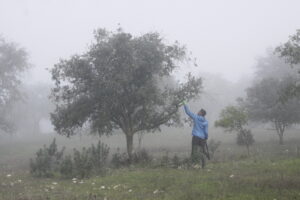
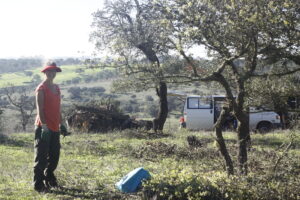
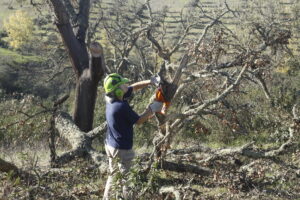
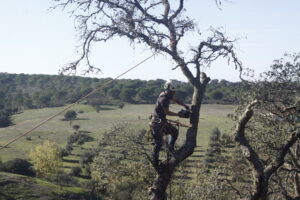

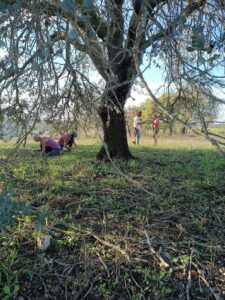
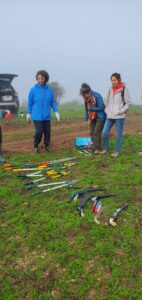
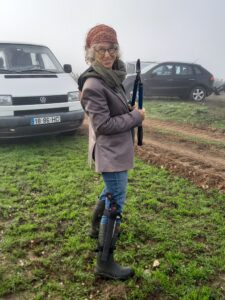
The second week of work was dedicated to planting more than 6.000 plants, divided into around 20 different species, including cork oak, holm oak, pine tree, wild olive tree, rosemary, etc.
Most of the species planted are native or well-adapted to the climate, which will help regenerate the landscape and improve the conditions of the place so that it may later be possible to introduce species that are less common in the region, to increase biodiversity and encourage the development of new ecosystems, in balance and in line with climate change.
Previously, furrows were made to make planting easier and to help retain more water when it rains, as these are dryland plantations. We planted more trees than necessary, as we know that some won’t survive, and others may end up being cut down to give space and to help create organic matter for those that stay. It’s an approach followed by André and his team, which is economically and ecologically interesting, and which ends up resulting in good success rates and in trees that are in good health and well-adapted to the place.
During the week, we received the thousands of plants in a truck (fortunately, the road inside the land had just been repaired – an article about this will be published soon). We made chains of people to make it easier to transport the plants to two shelters near the ruin, protected from the wild boars that might otherwise be attracted and take advantage of the small plants and the fresh, moist soil in the pots! Throughout the week, we looked after these plants, organising them according to their type and their destination, checking that they were in good condition before being planted.
We started by planting the three syntropic rows facing the lake, which will also work as windbreaks (to limit evaporation from the lake). Then, we moved on to the two slopes under the path that leads from the entrance to the property to the old farmhouse. In total, more than 4.000 trees and shrubs have been planted in these areas, including many cork oak acorns that we collected ourselves at the base of a magnificent cork oak next to one of the wells.
Then we headed downhill to the area of the two wells, where two water lines, that cross the land, join together. This area has been cleared and we planted fruit trees and shrubs for essential oils, creating a magnificent, naturally integrated garden that could later become a real zen space. Finally, we planted a large number of trees on the north-facing slope bordering the lake to try to extend the climax forest of the neighbouring plot, and the rest of the trees and shrubs in another waterline below the lake, protected by the eucalyptus forest. These three areas total almost 2.000 plants.
All the planting was done very carefully and delicately, following the experienced advice of Sandro, André, and Francisco, who tirelessly showed us the right methods and corrected our movements until we were all completely comfortable planting with confidence and in the most appropriate way possible. Once we had mastered the steps of the process, it became a real dance, in which each line or planting area was done quickly, but with awareness. It was thanks to the fluidity of the planting movements and everyone’s proactive participation that we were able to work on creating this space next to the wells, which was not initially planned.

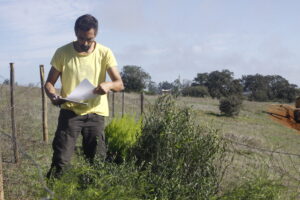

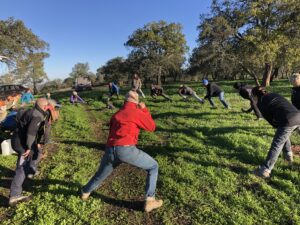
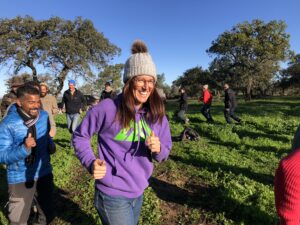
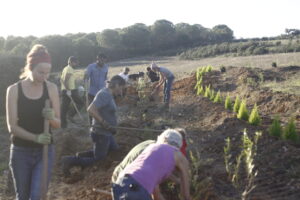

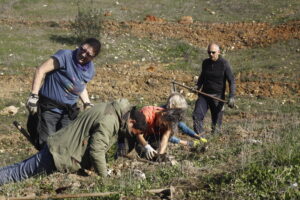
Other events marked this joyous week, such as the visit from the ICNF – Instituto de Conservação da Natureza e das Florestas (the forestry management organisation that validates requests to cut down trees and which travelled to the land to validate our request). It was an excellent visit, and the technicians expressed great satisfaction to see our project and our approach.
In the end, it was a great success, and this is just the beginning of the adventure! 😊
We’d like to say a big thank you to everyone who participated directly and helped make this operation possible through their support!



